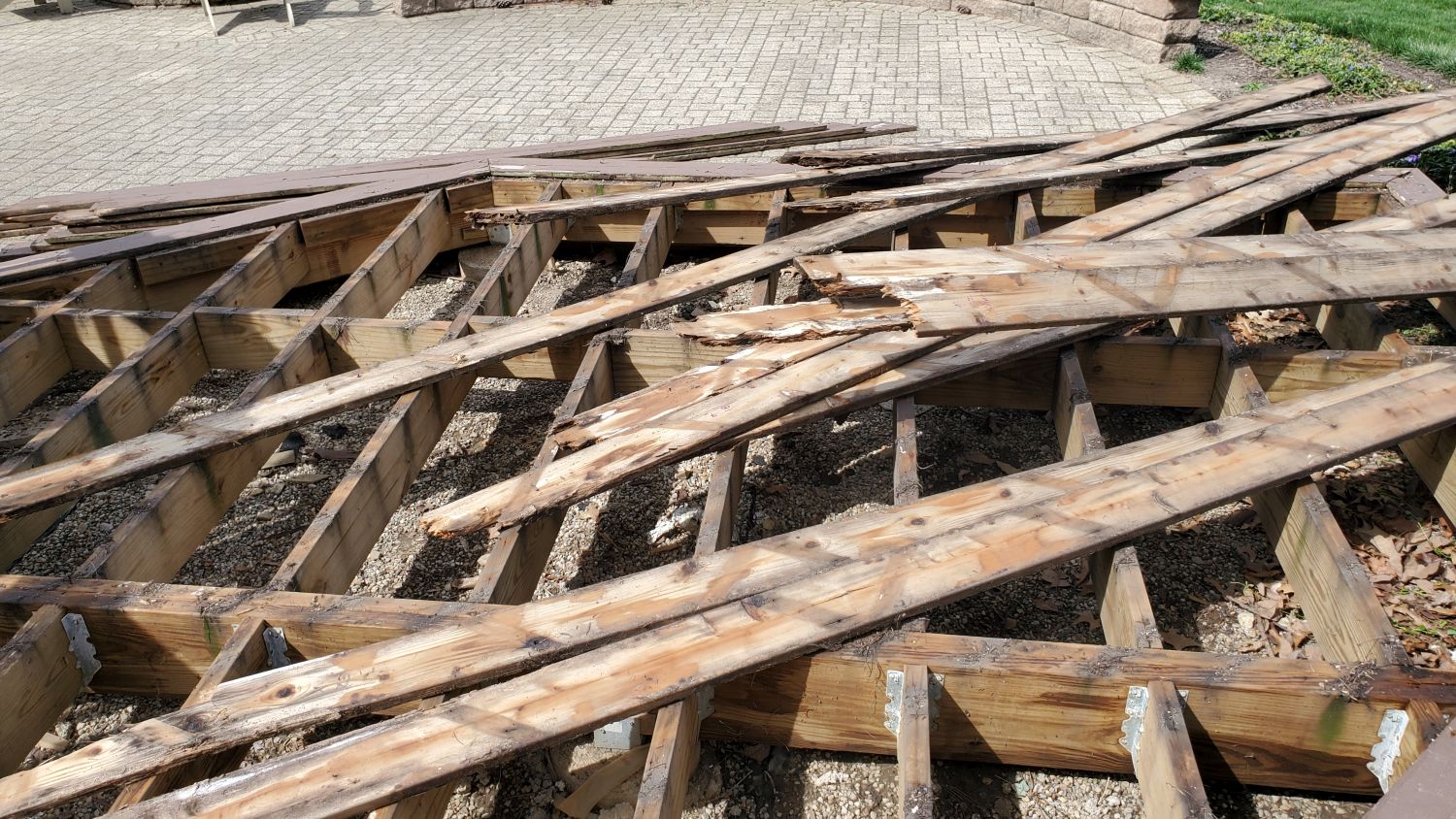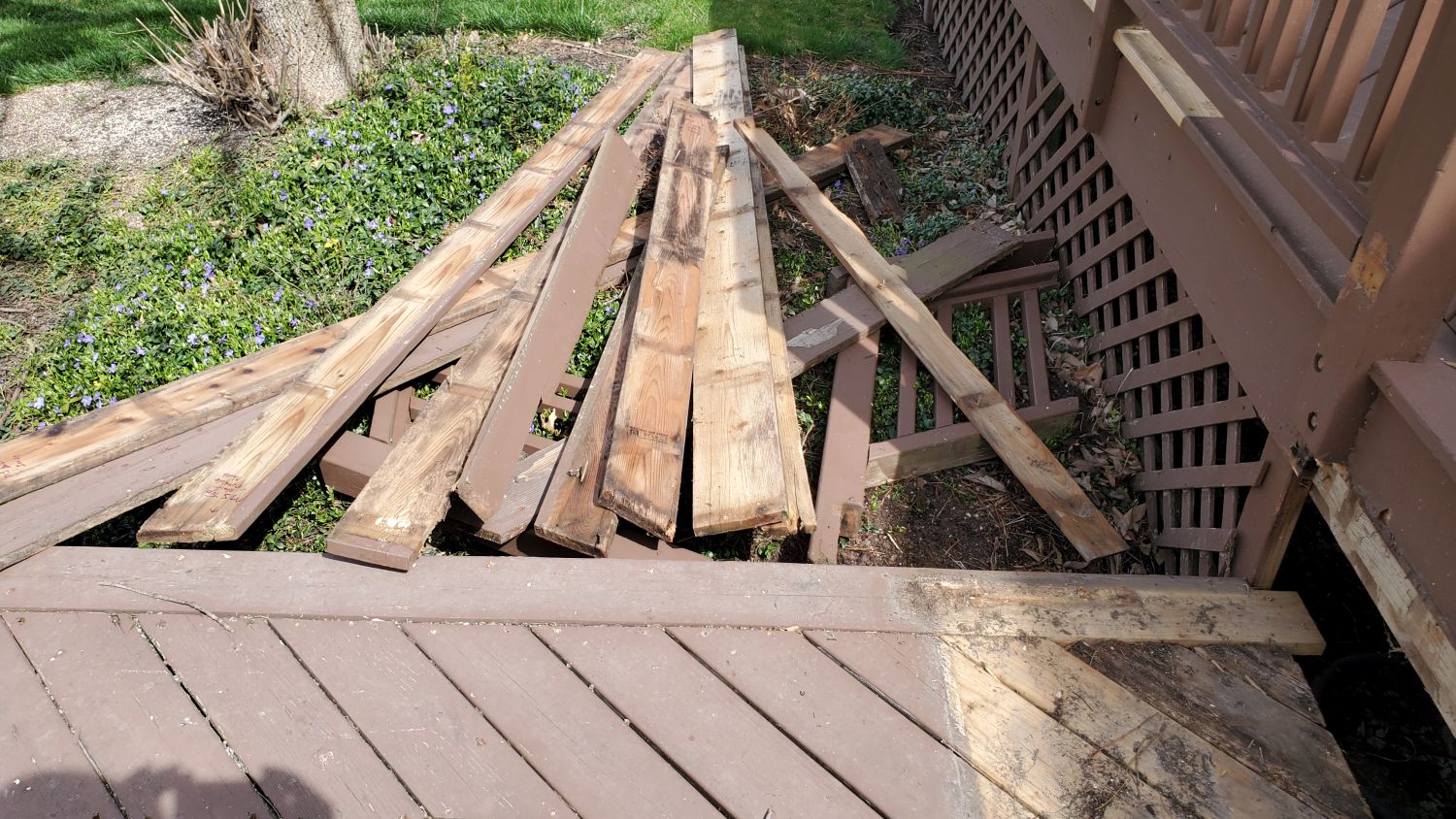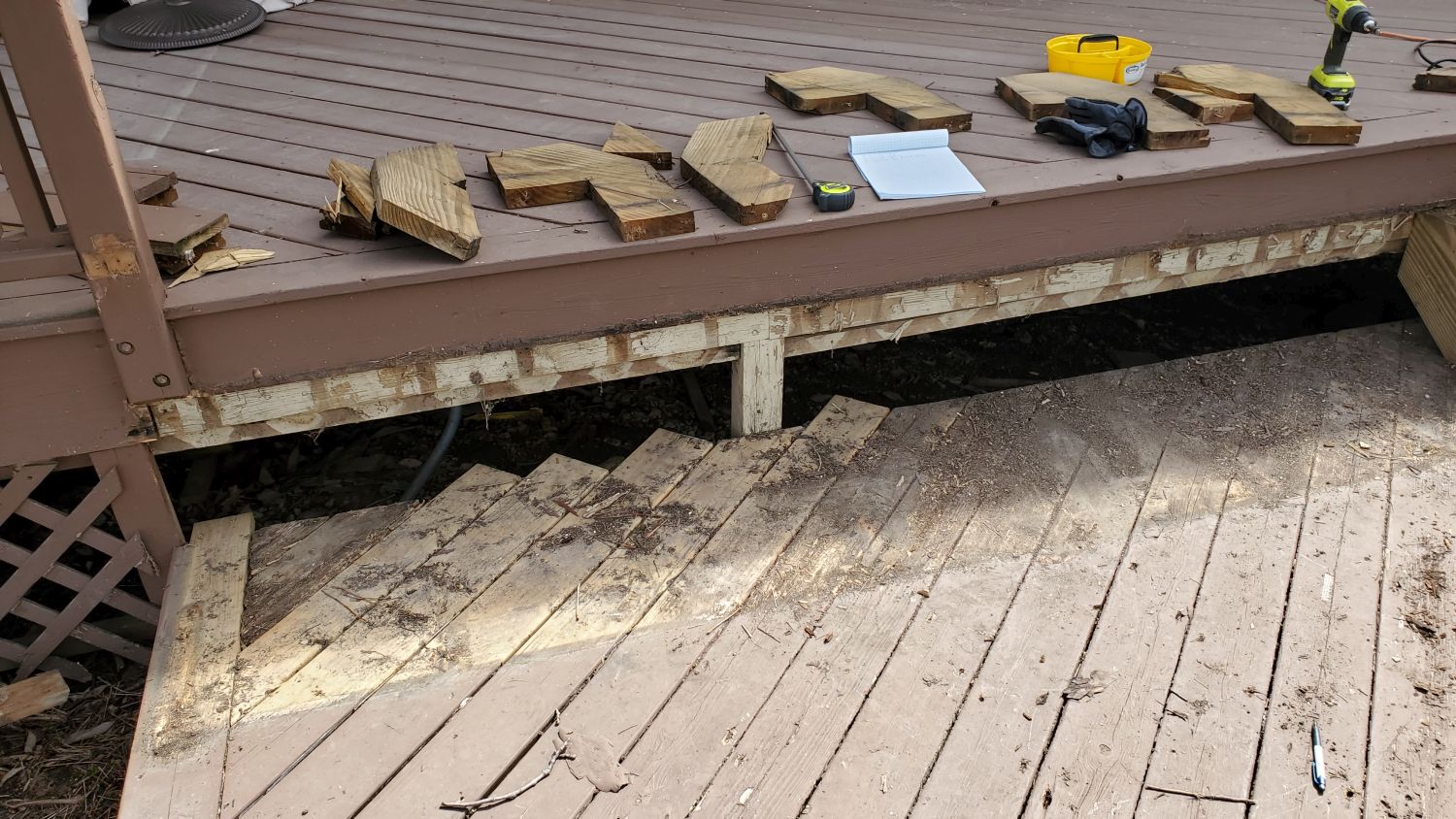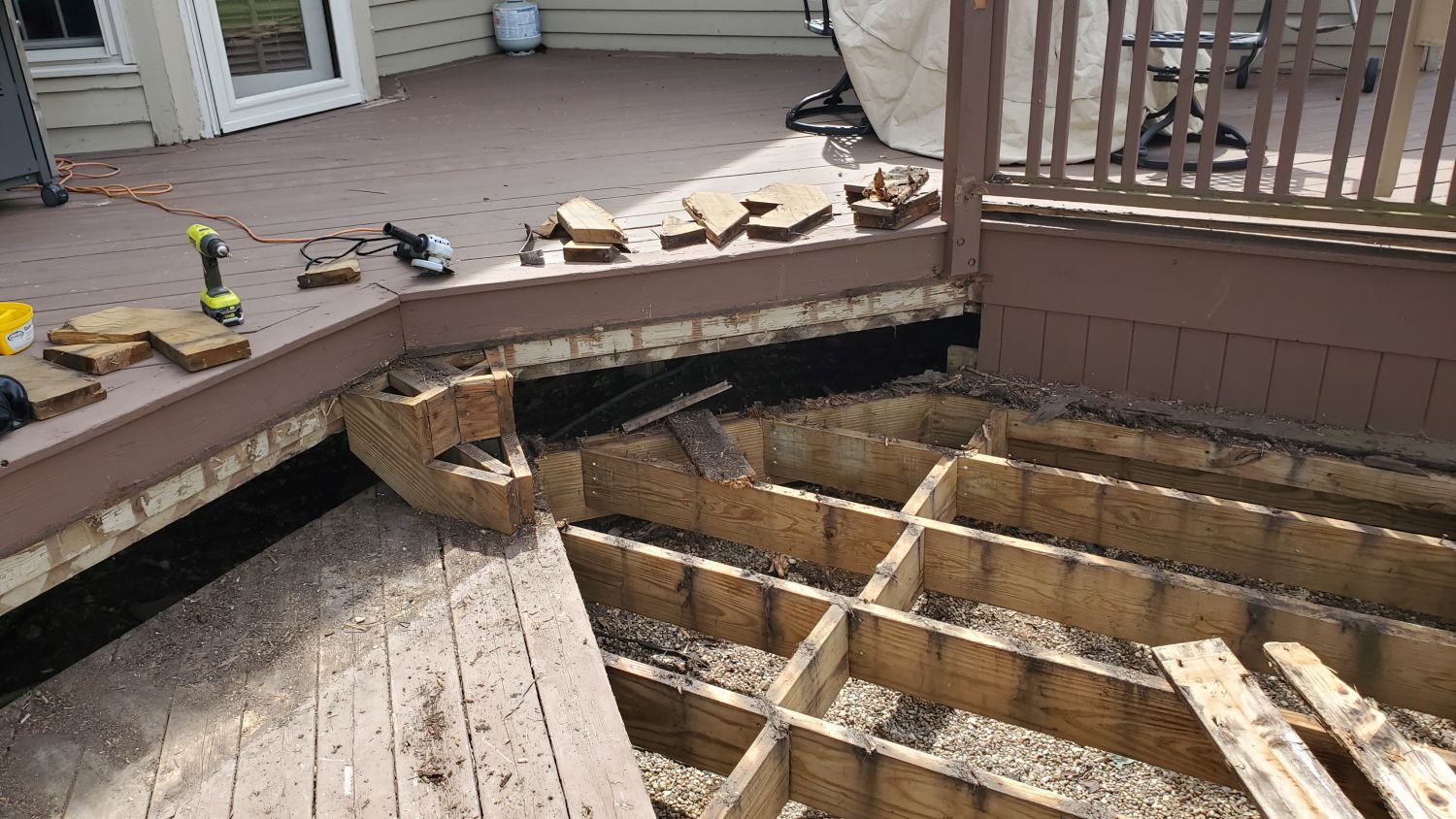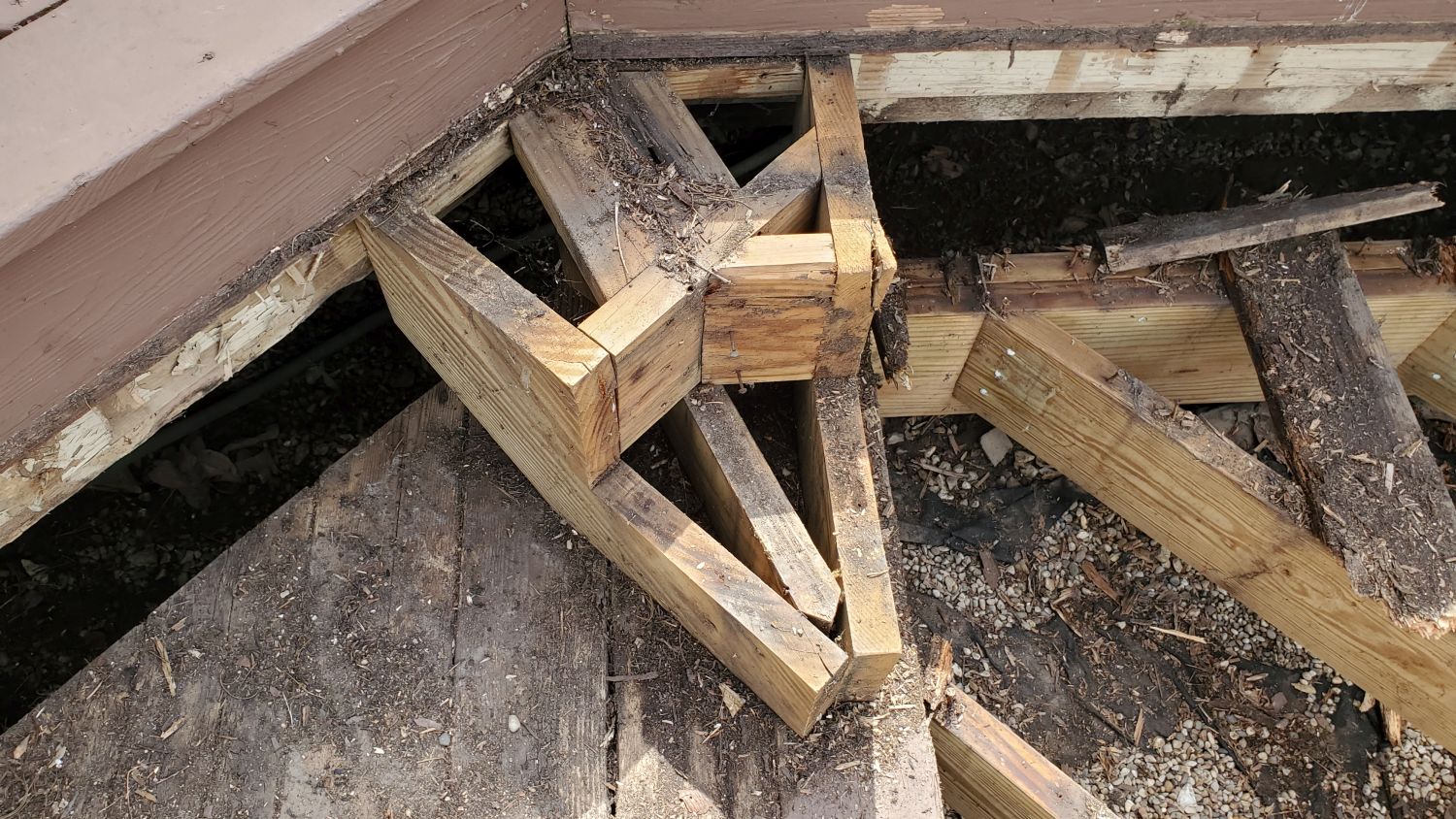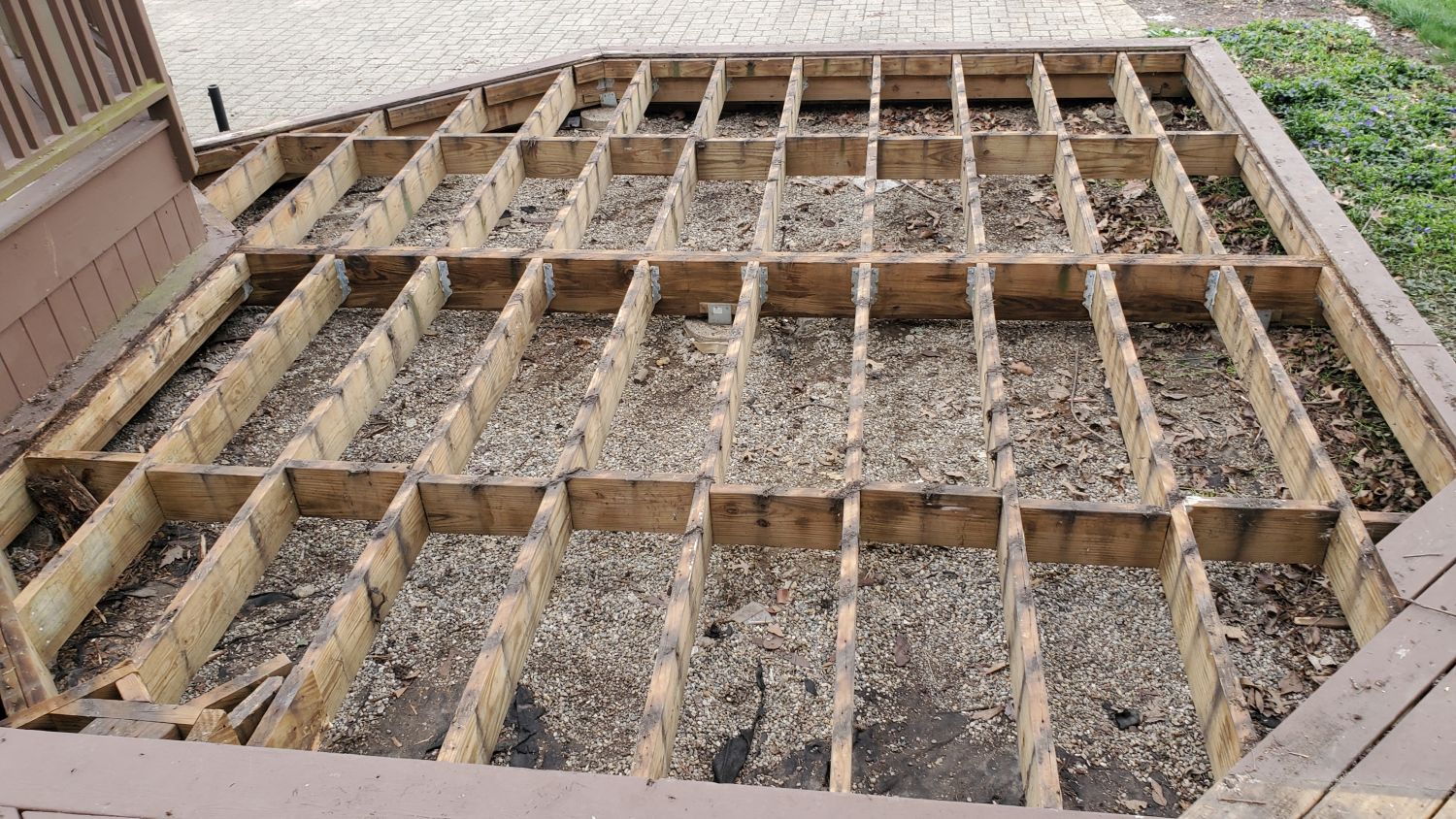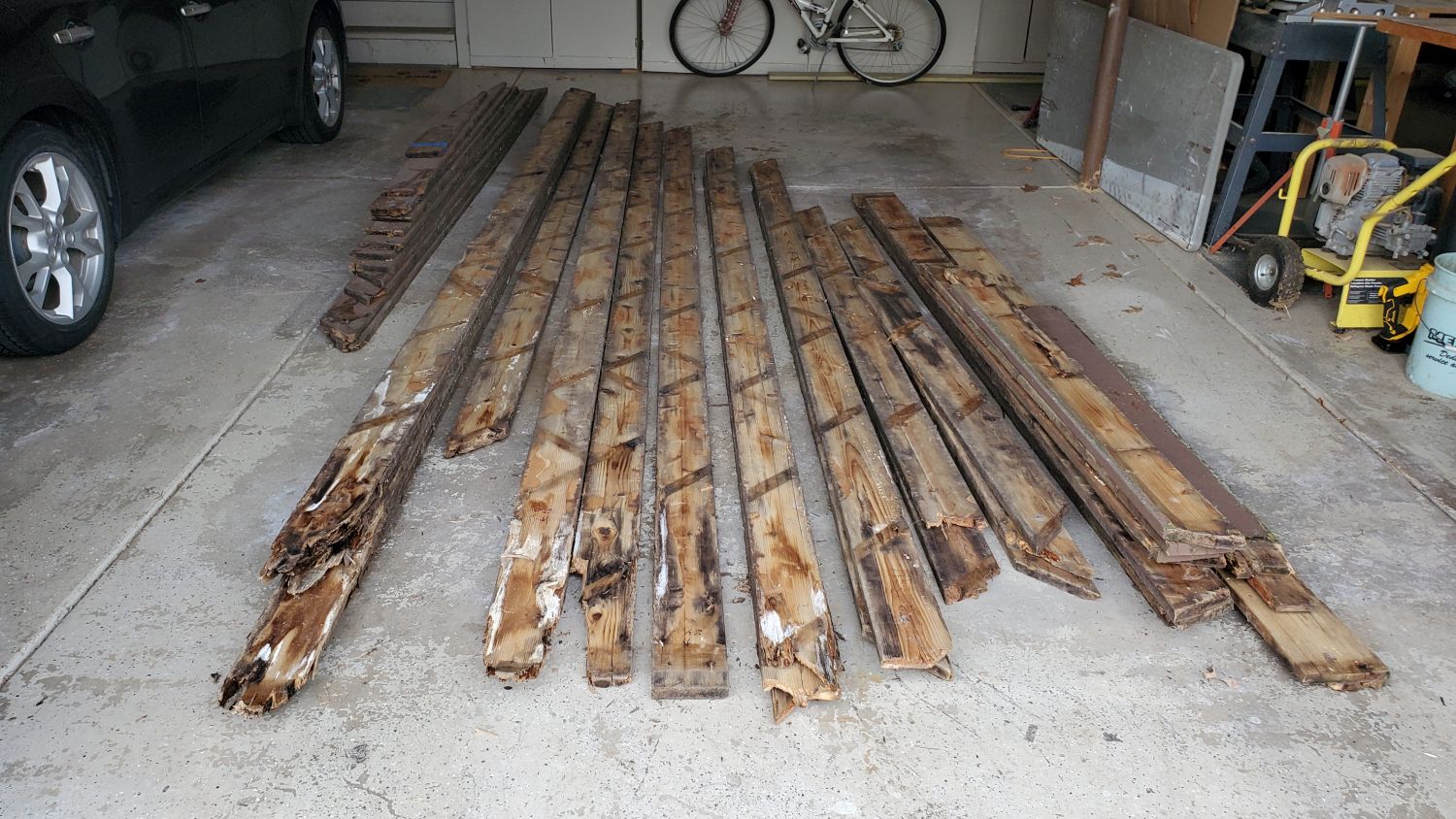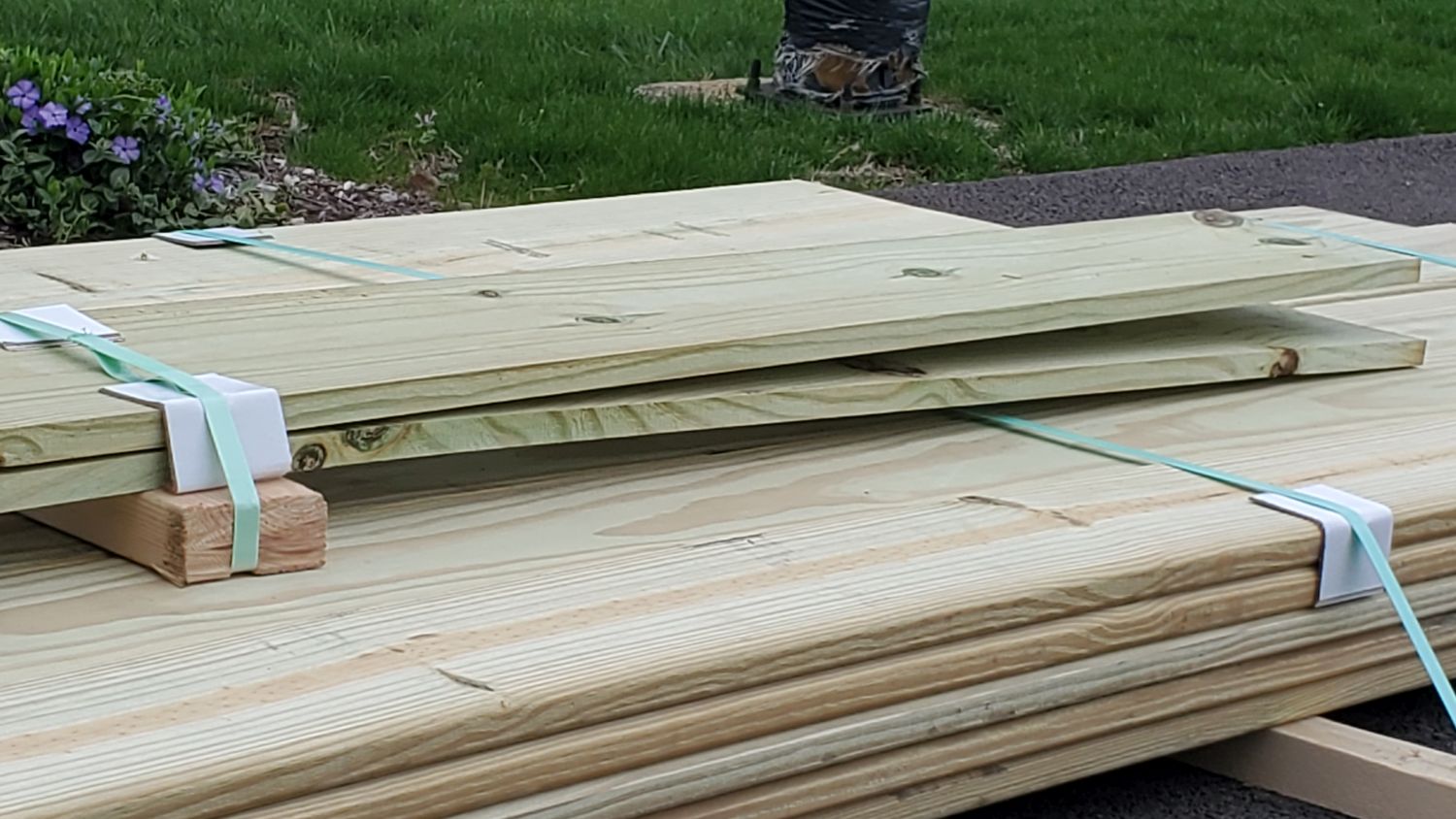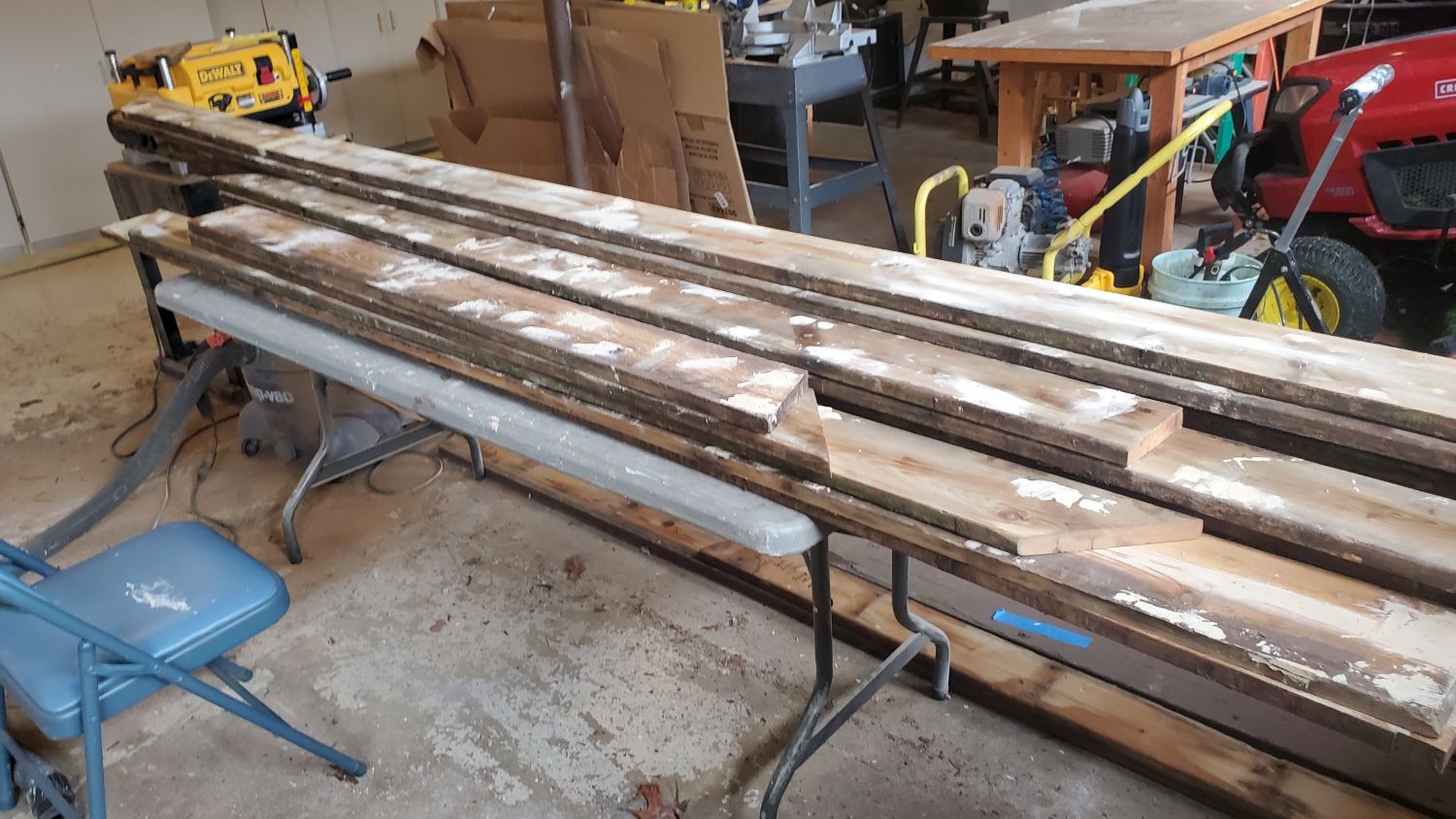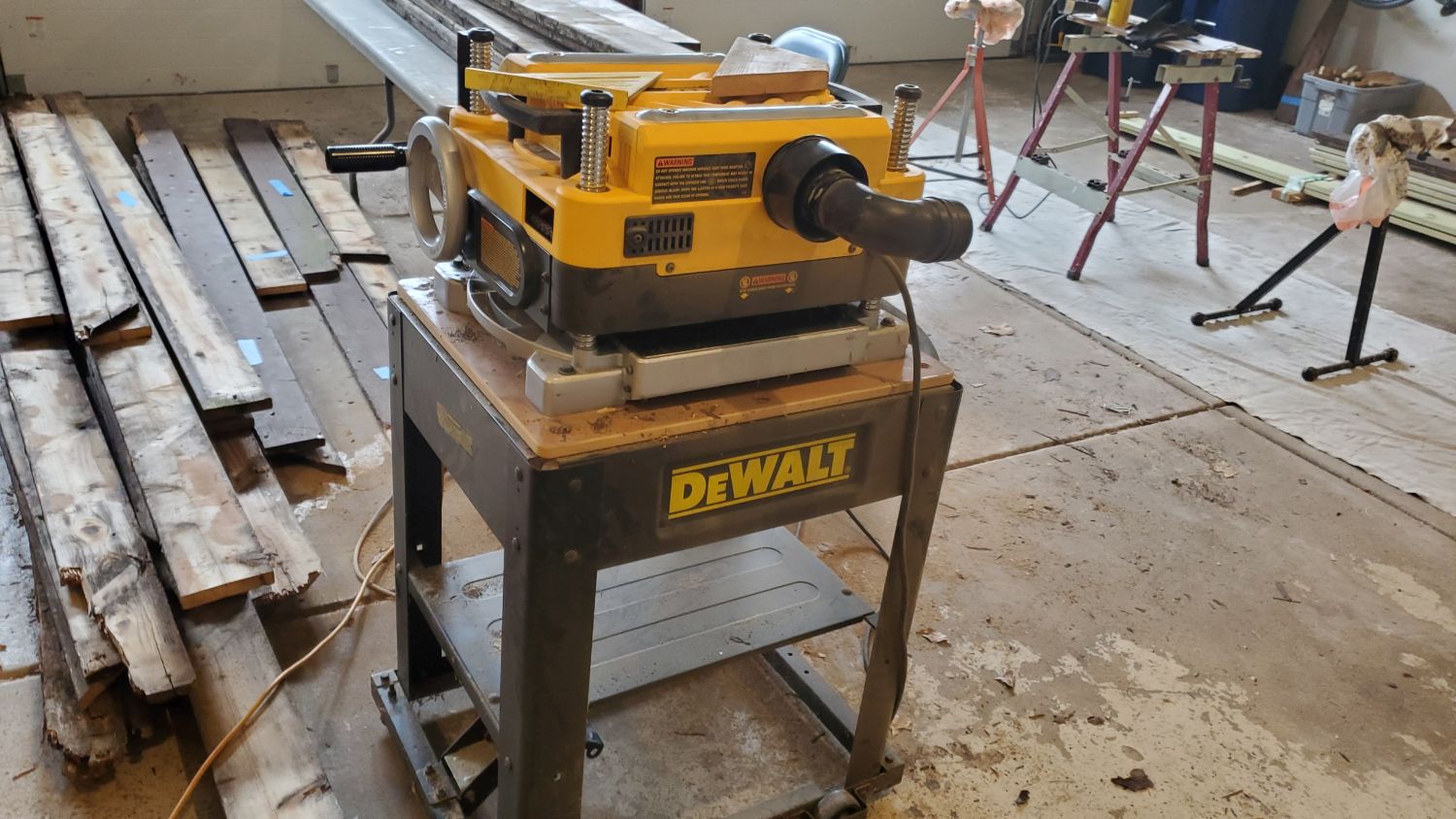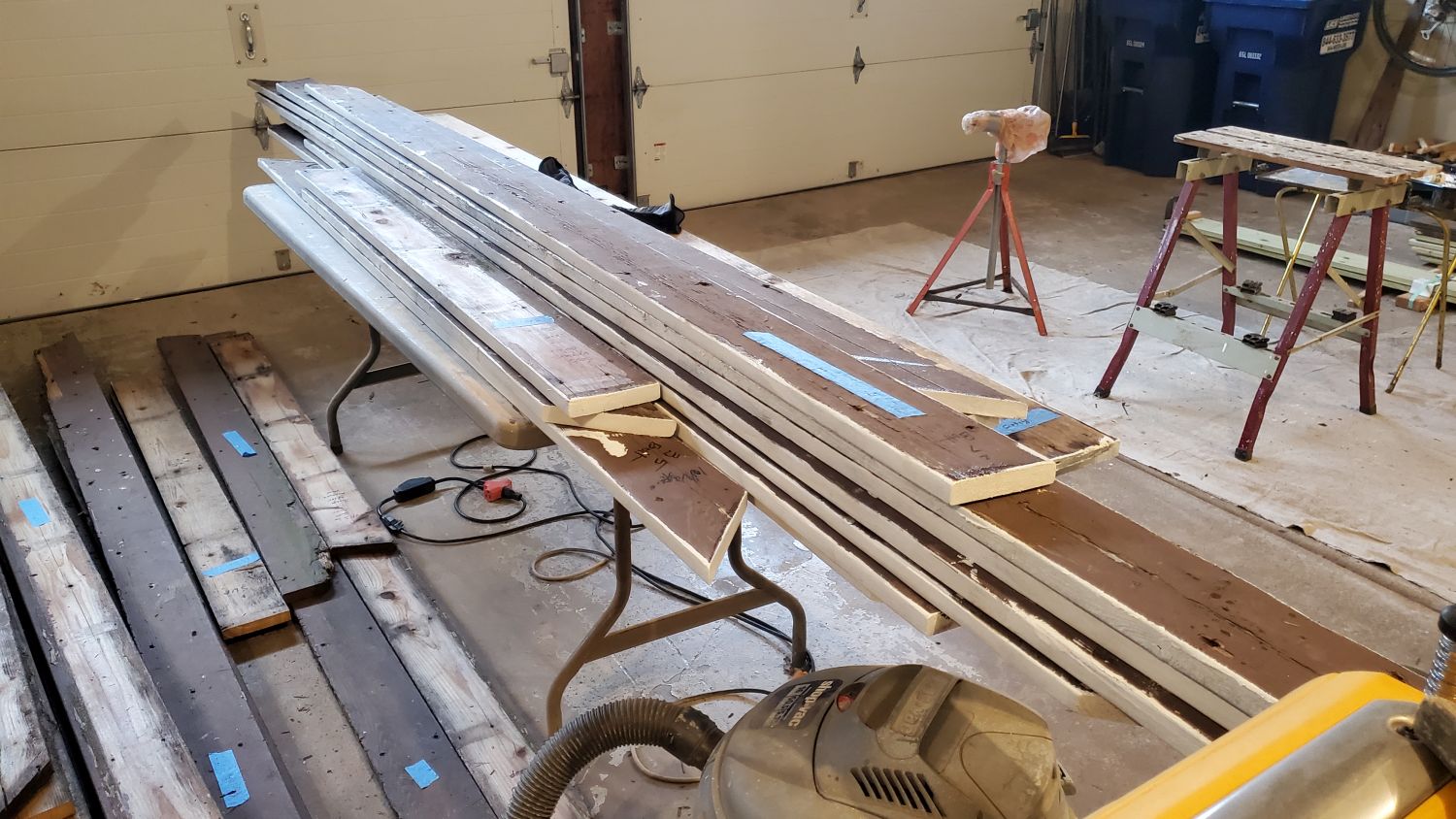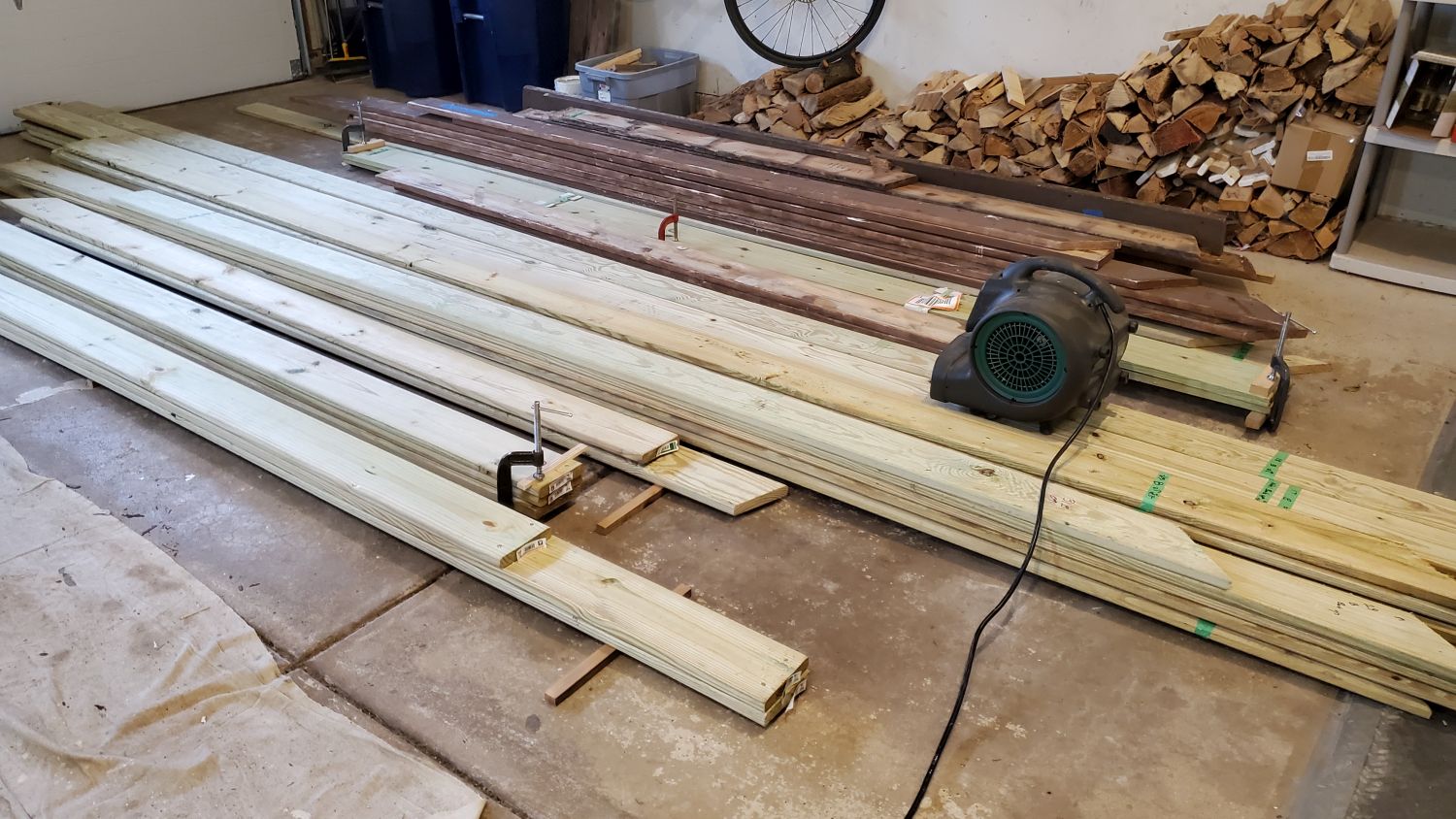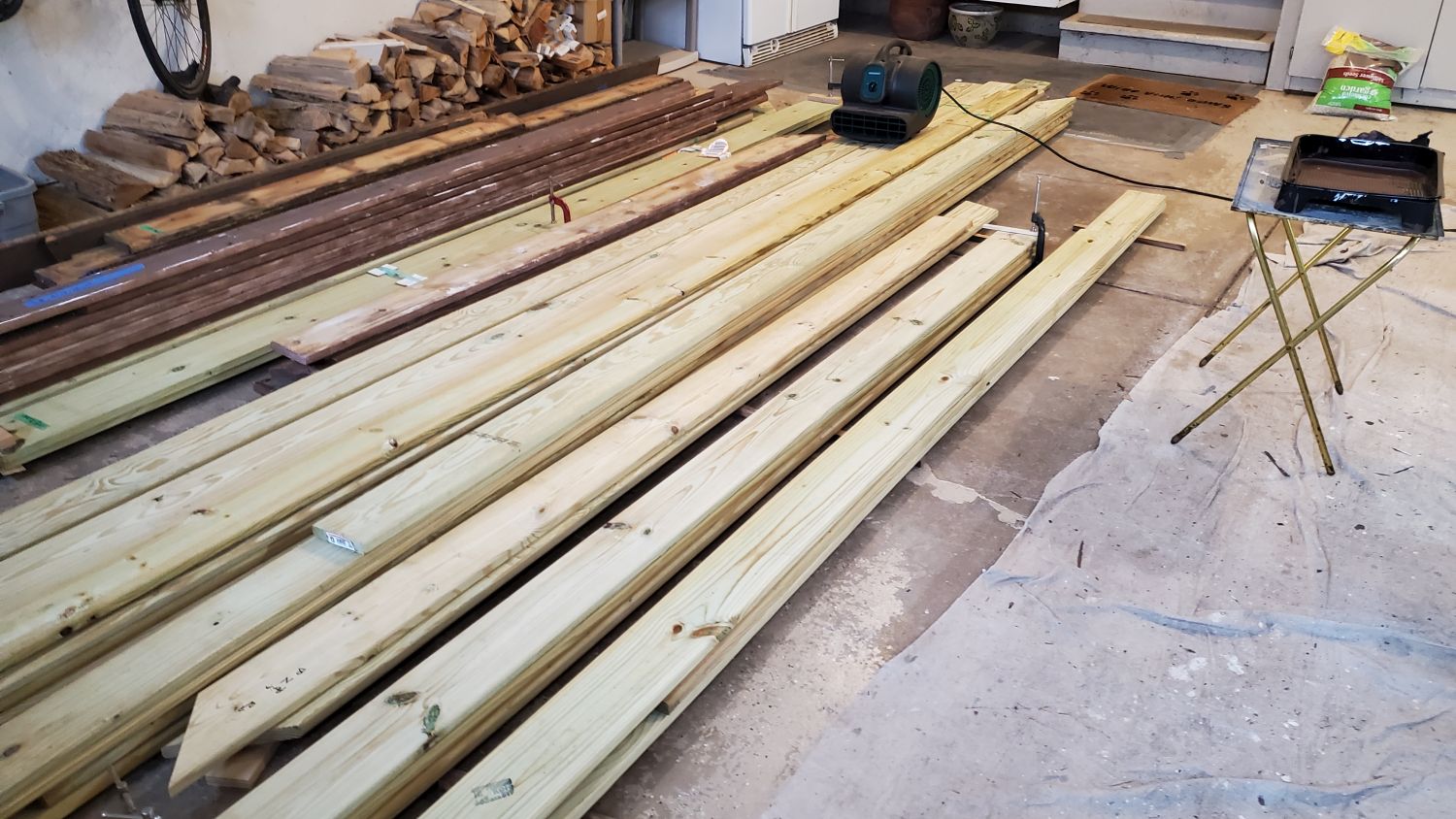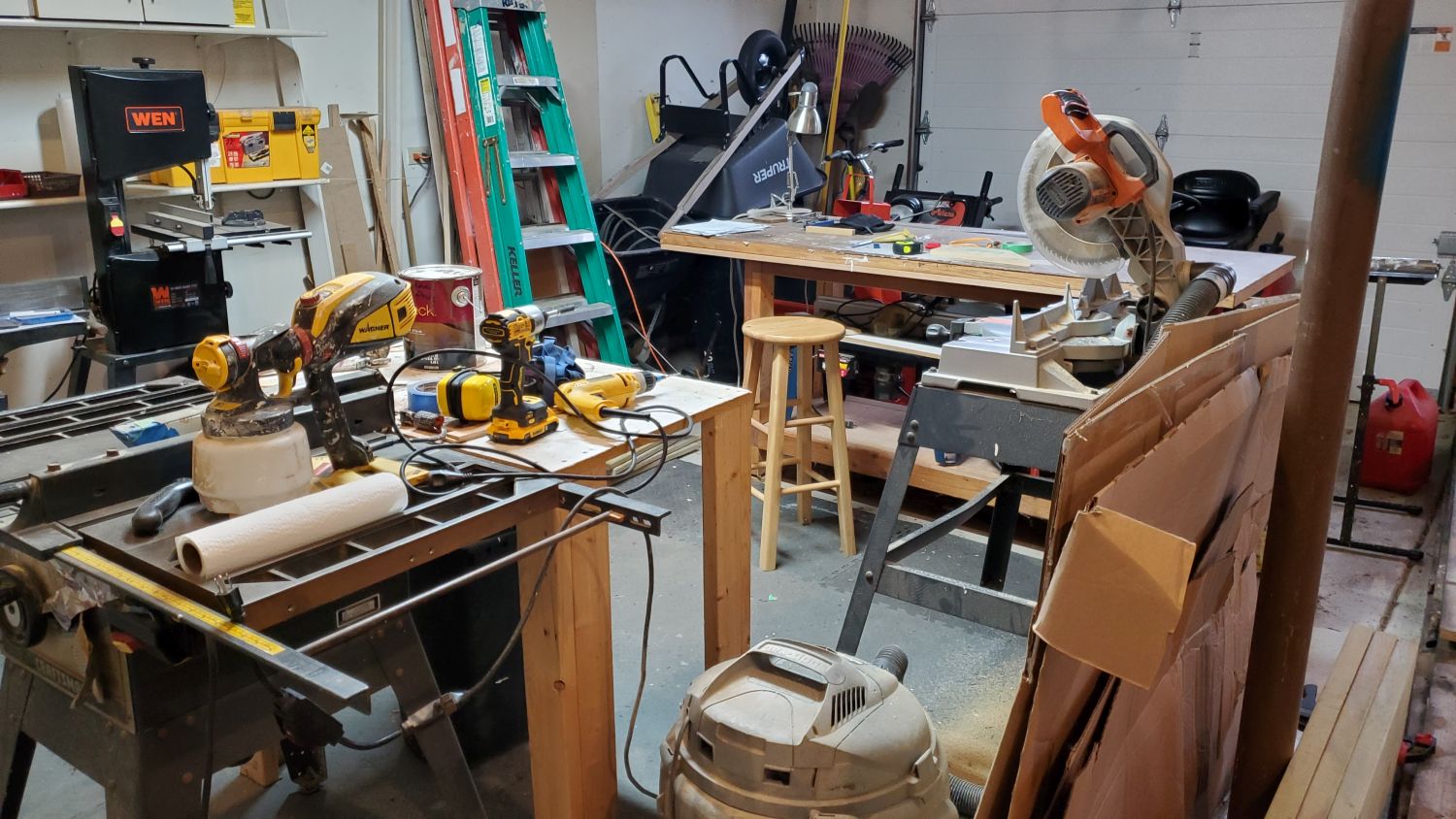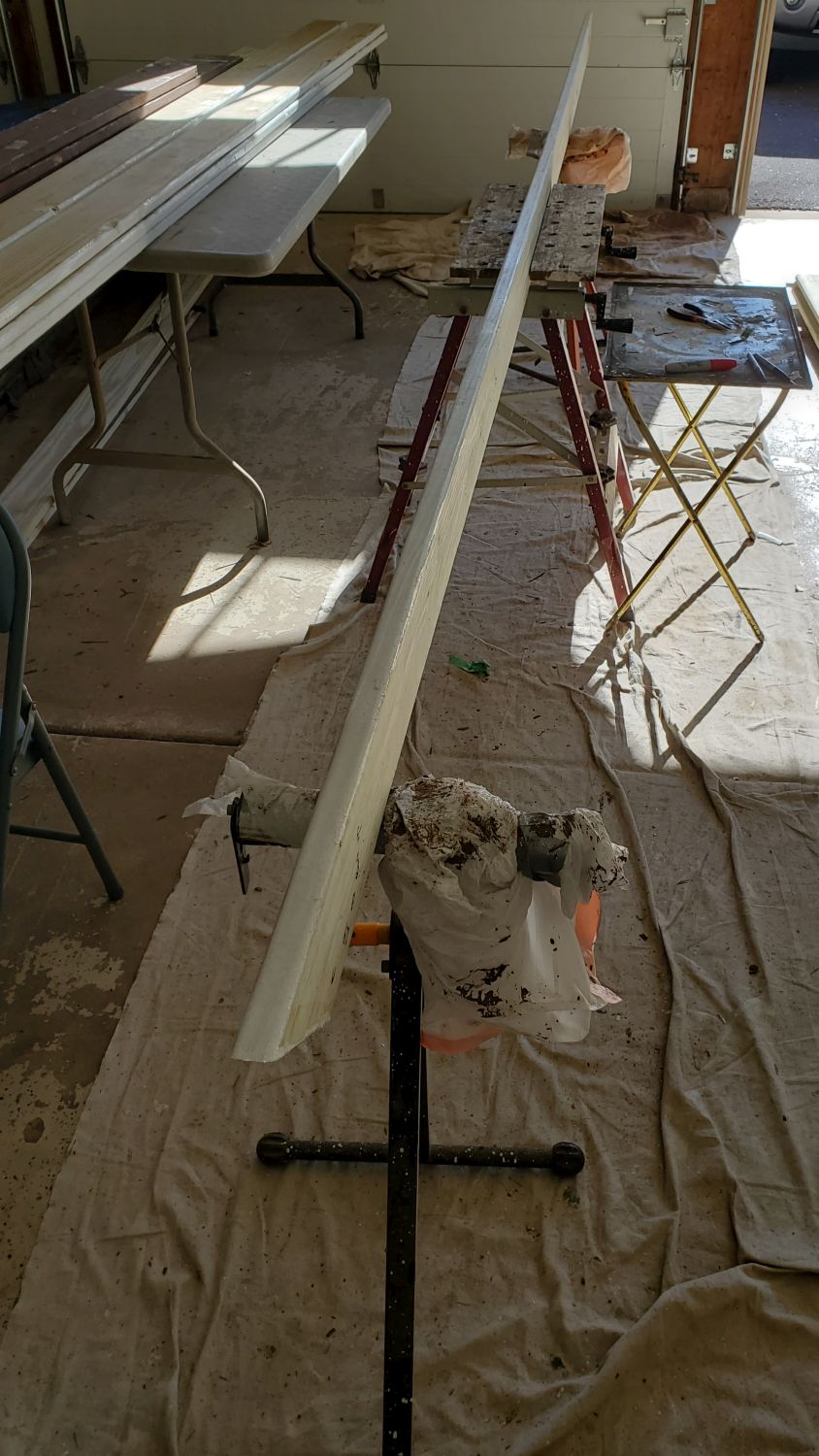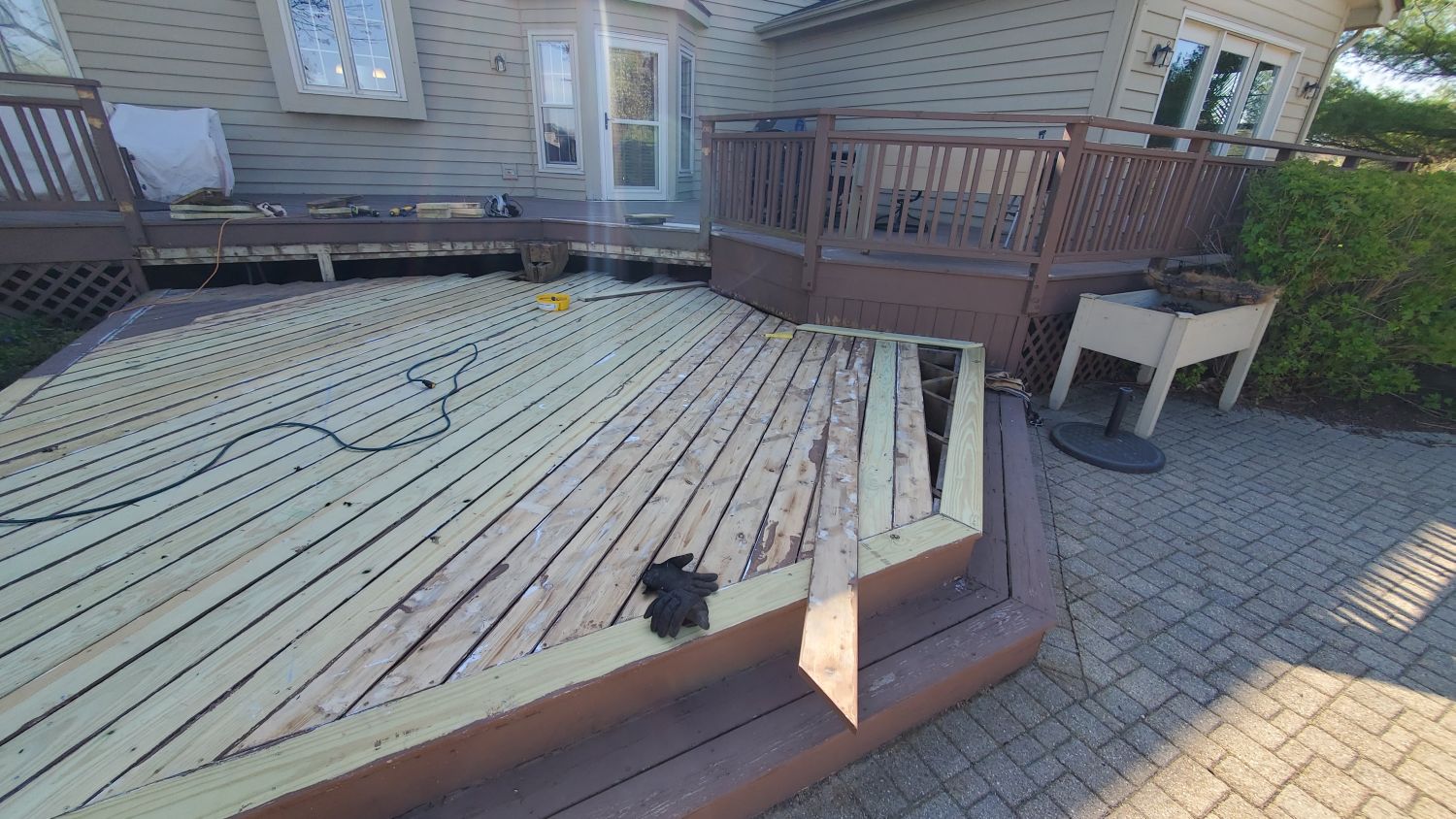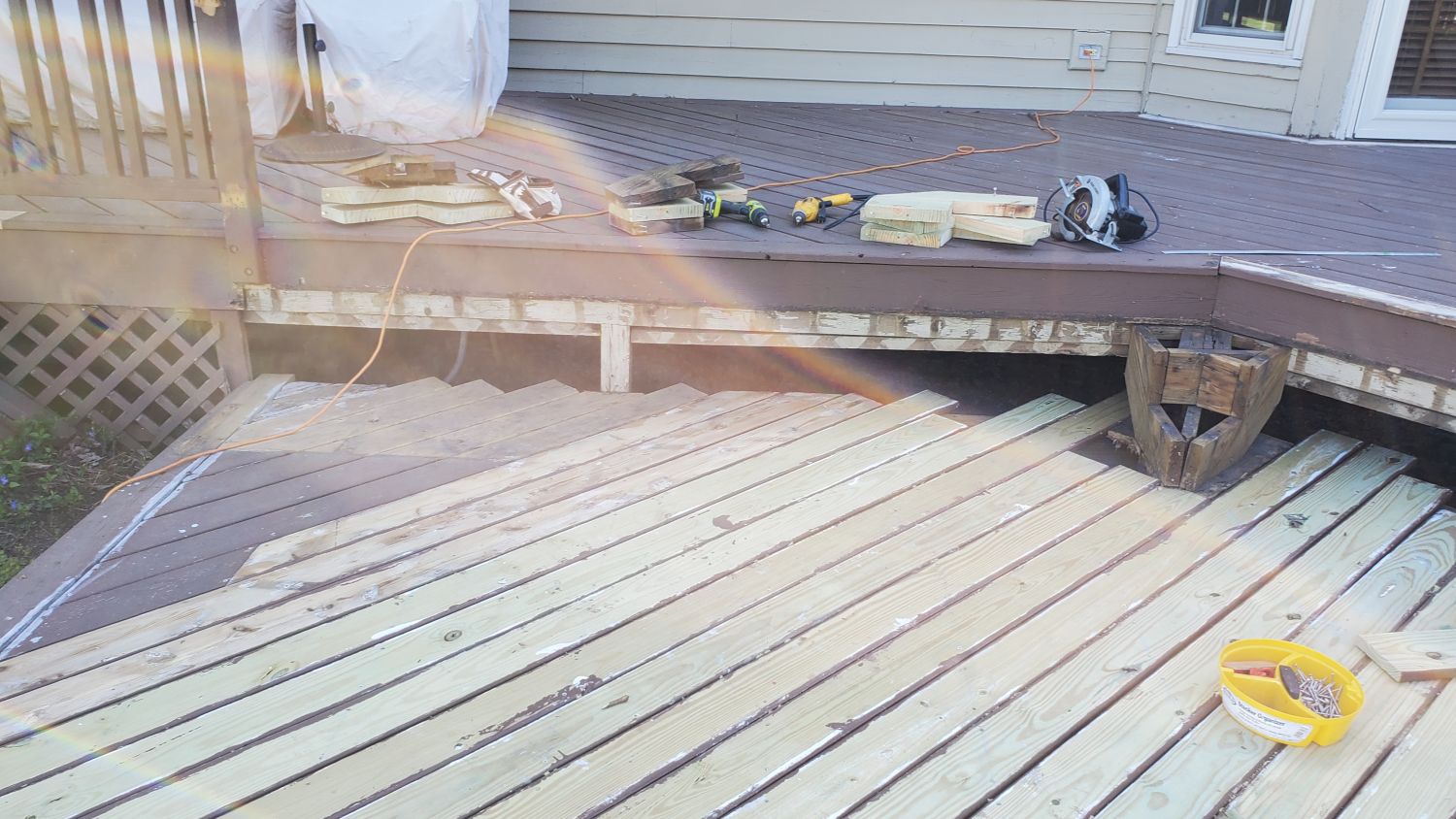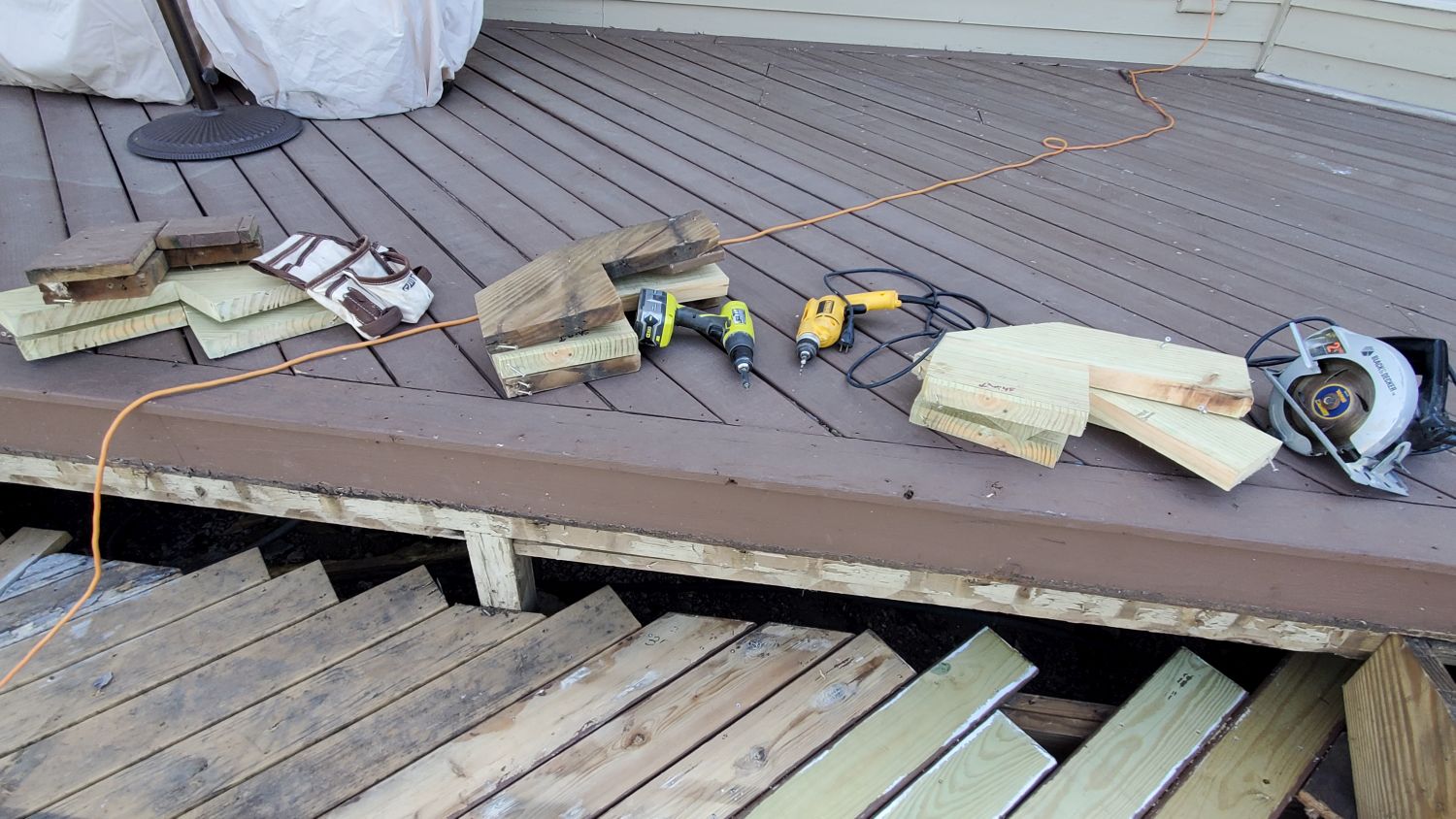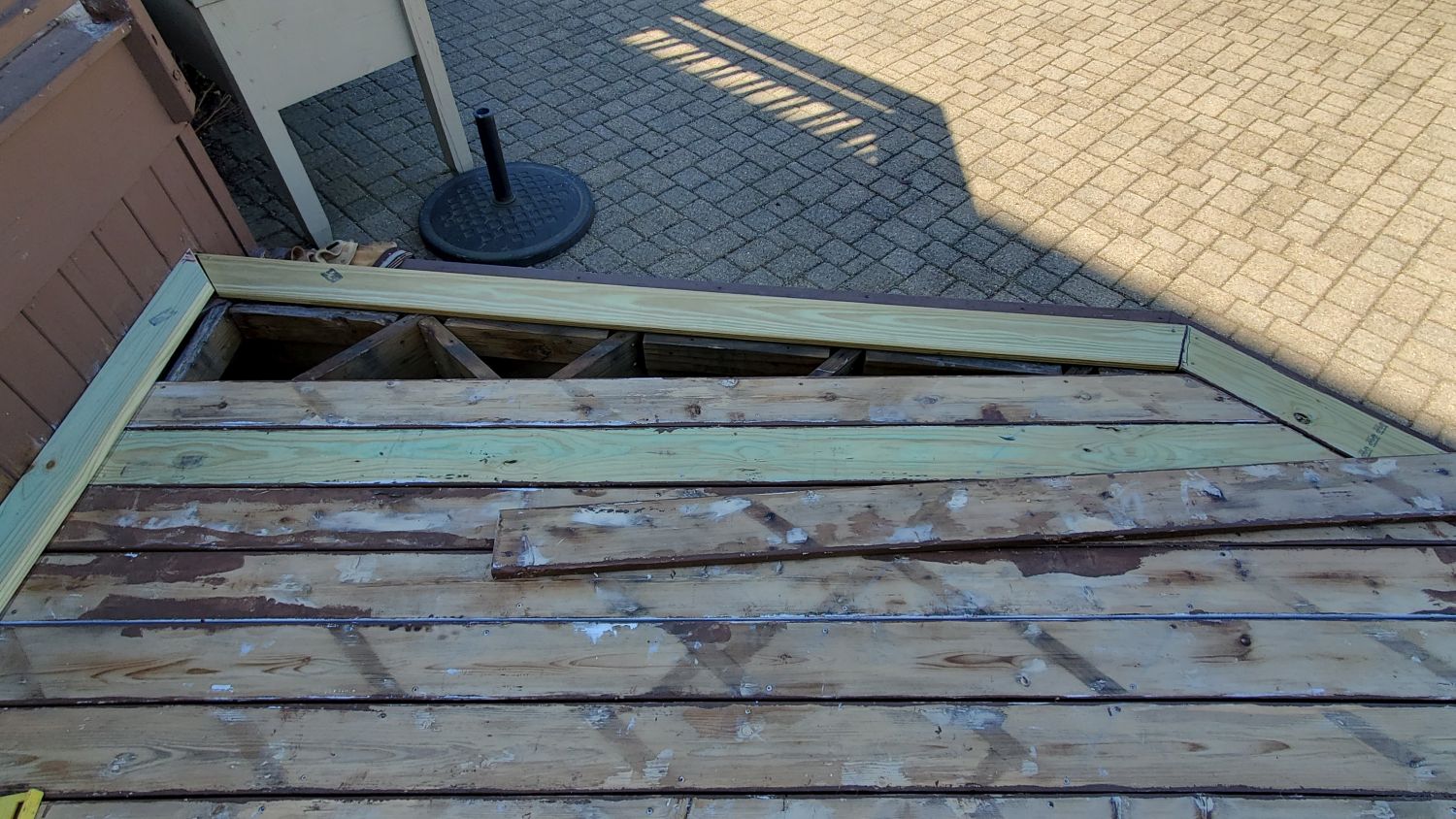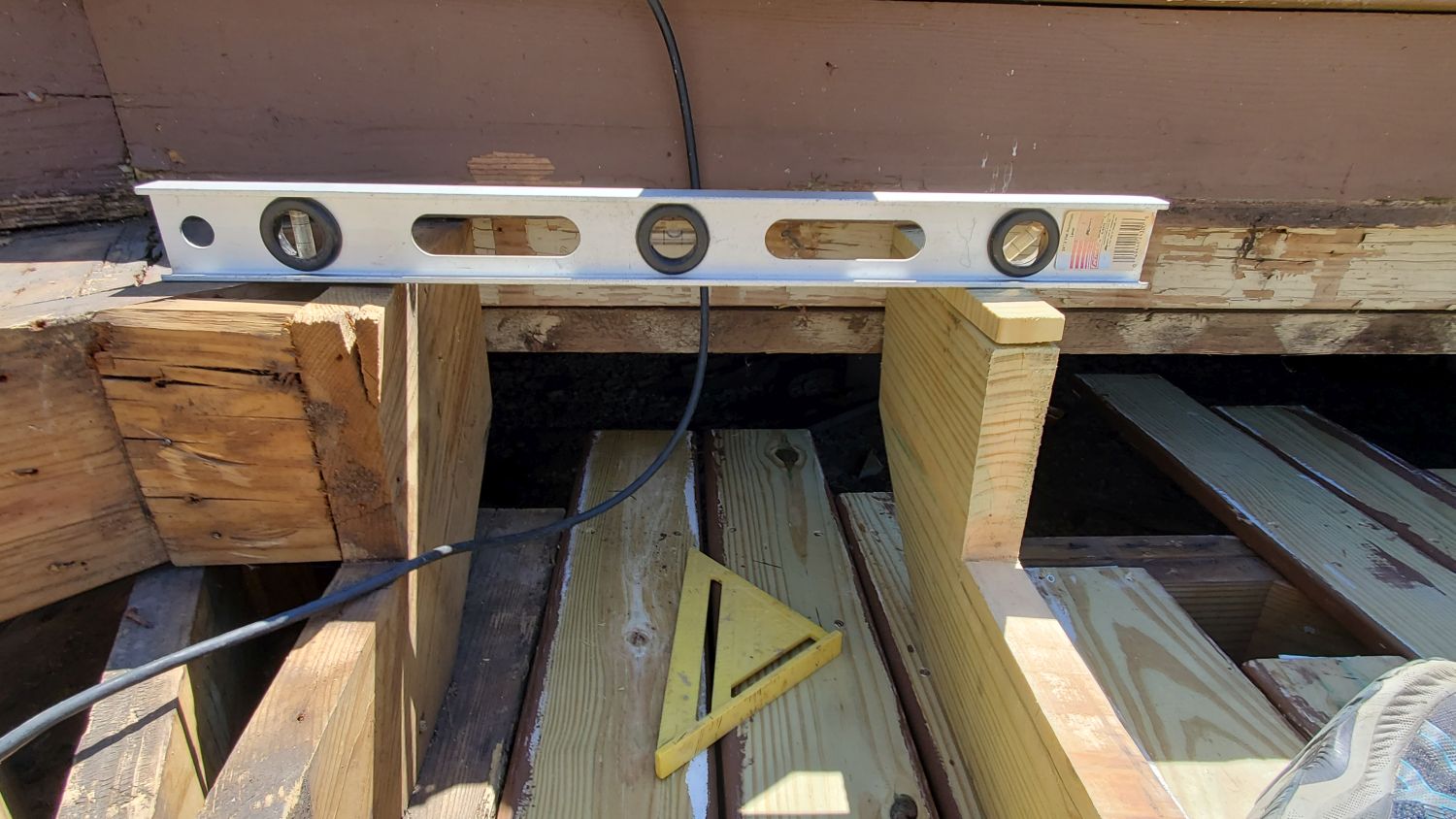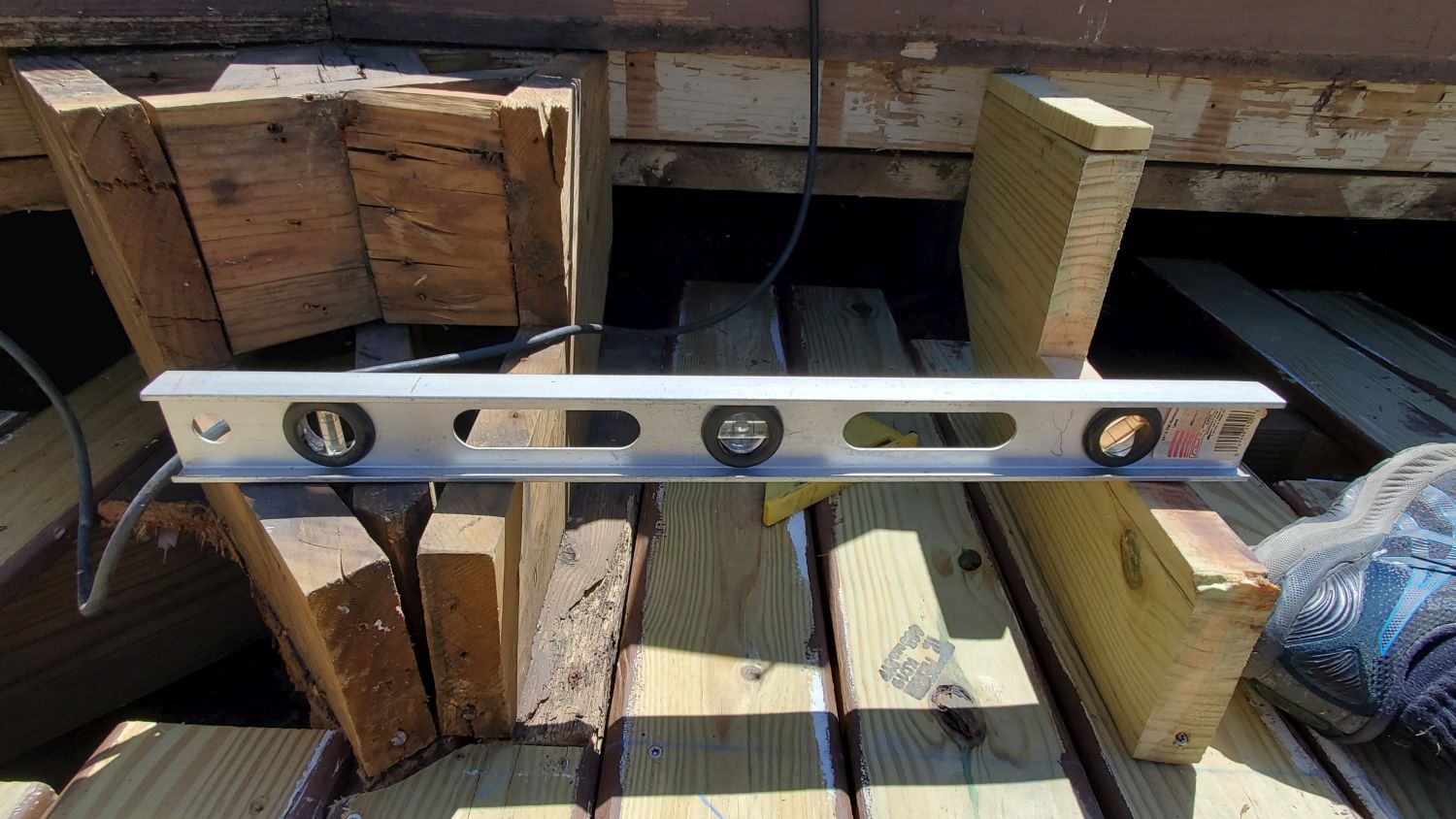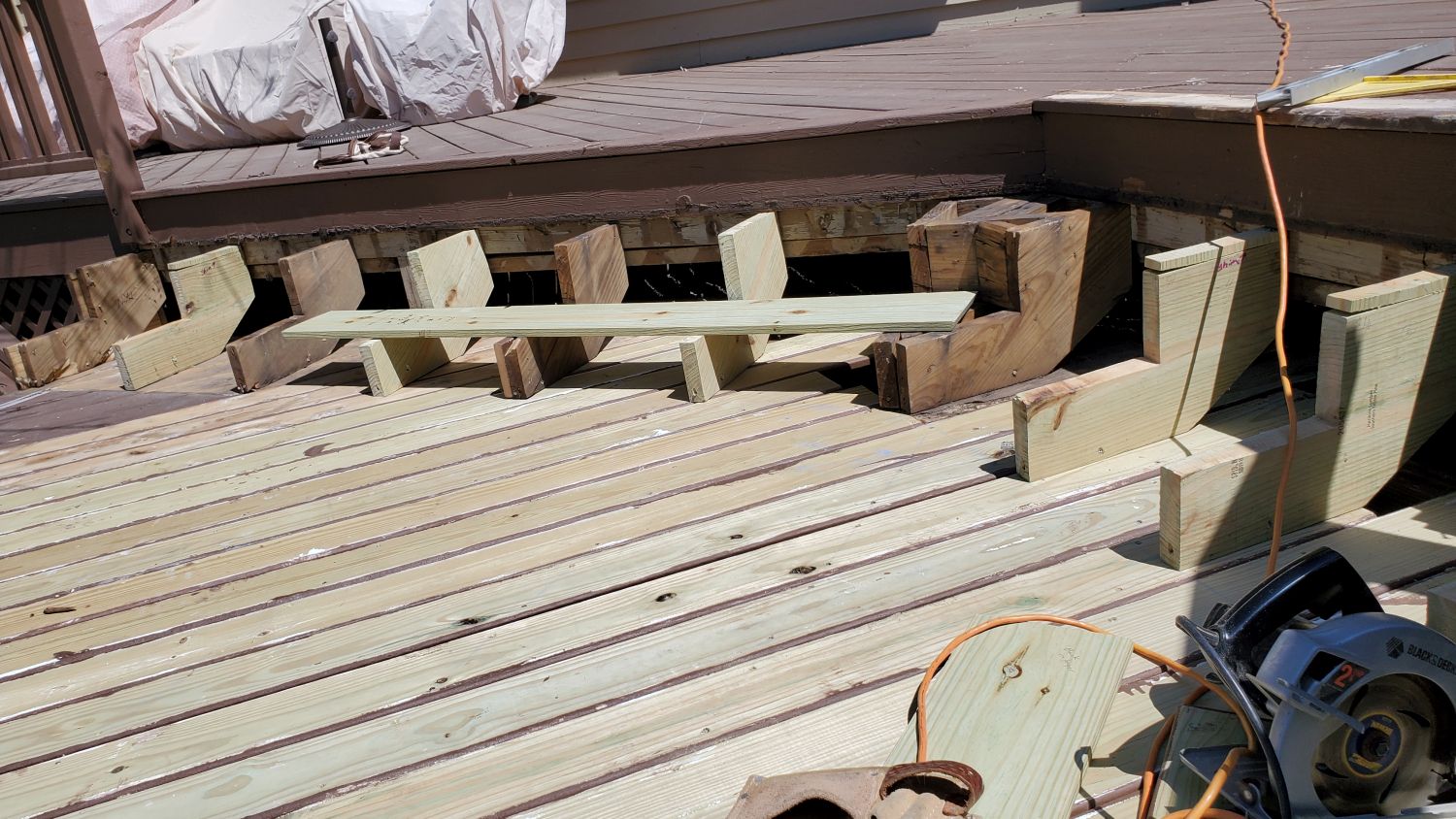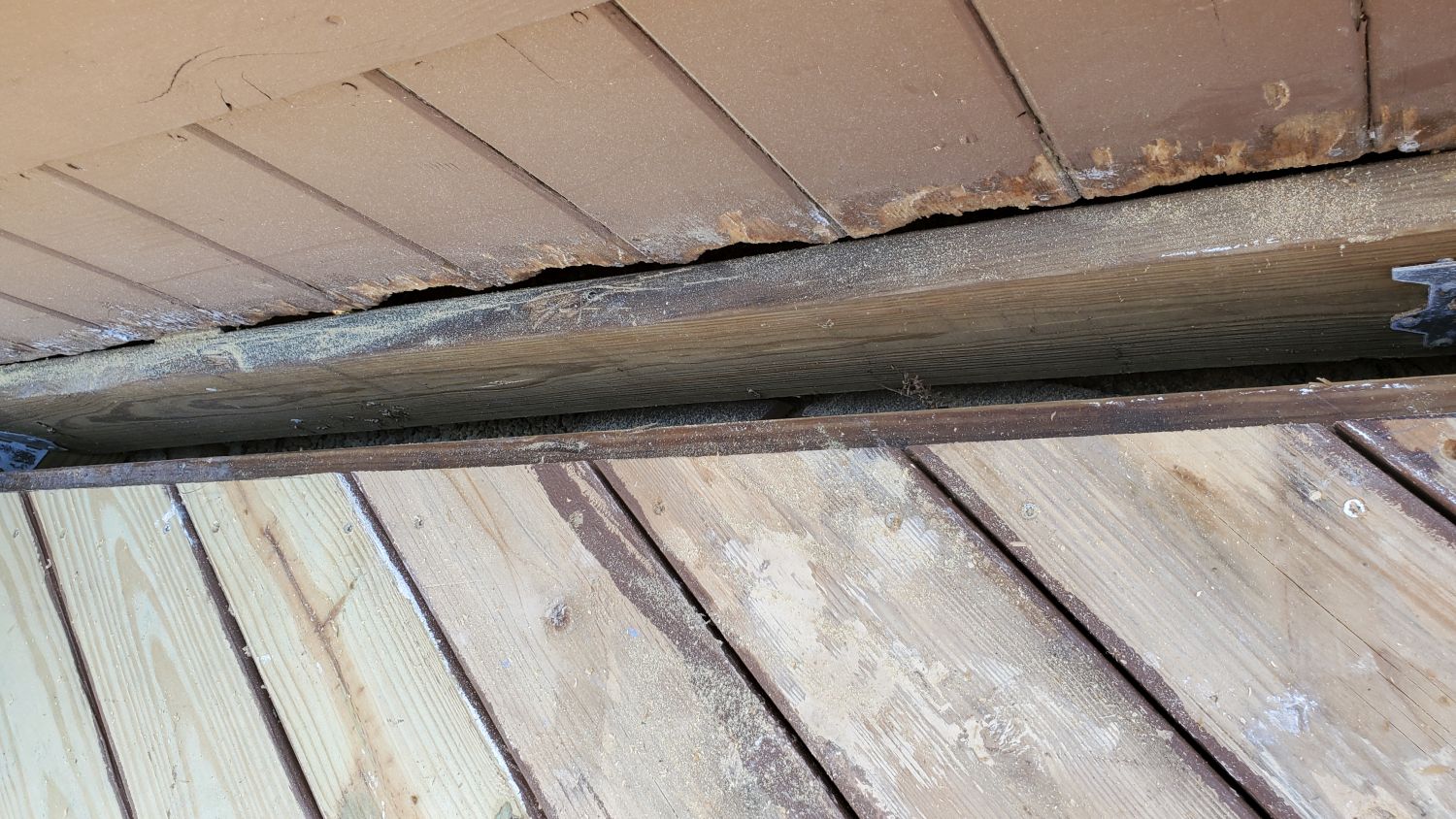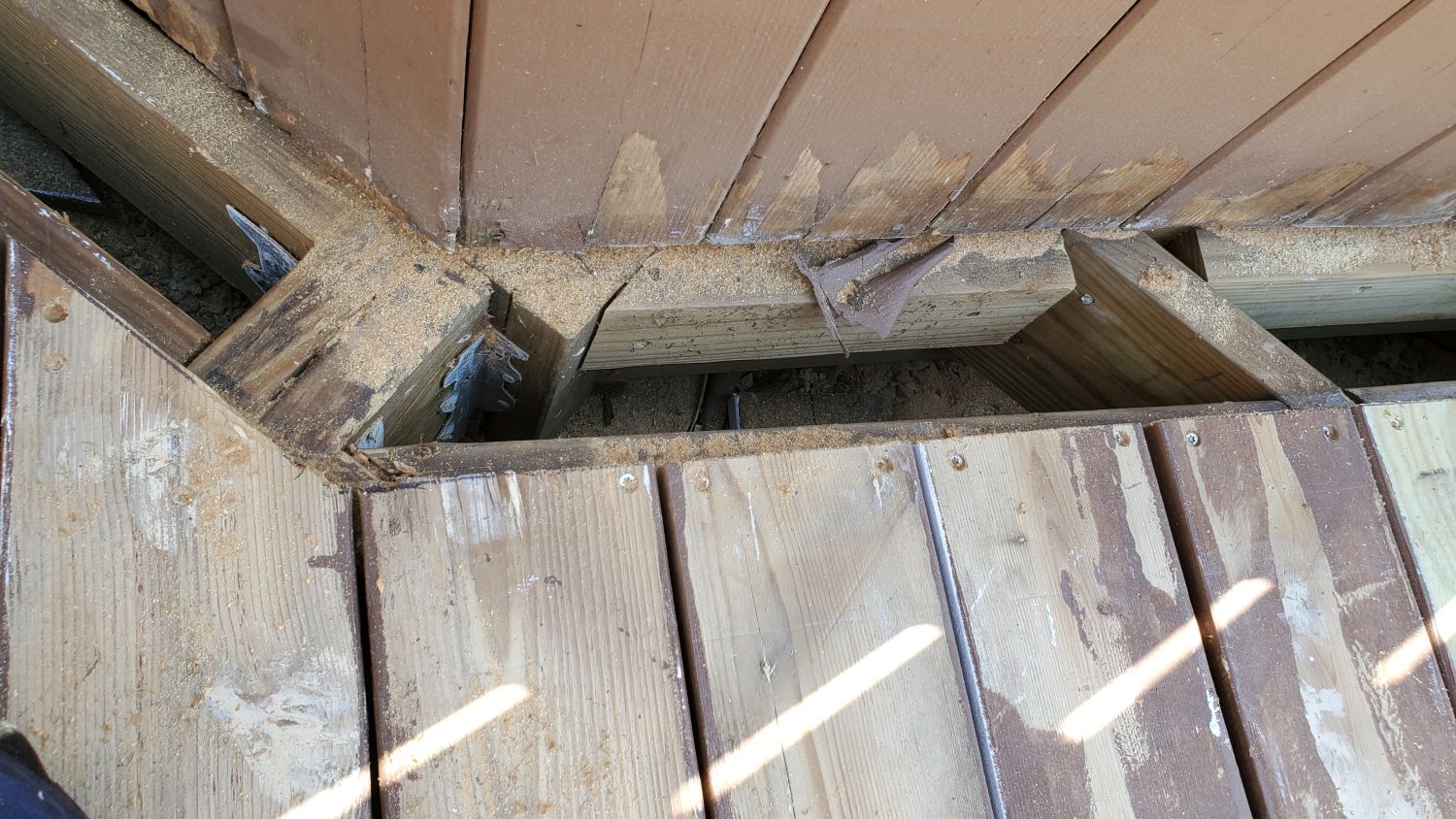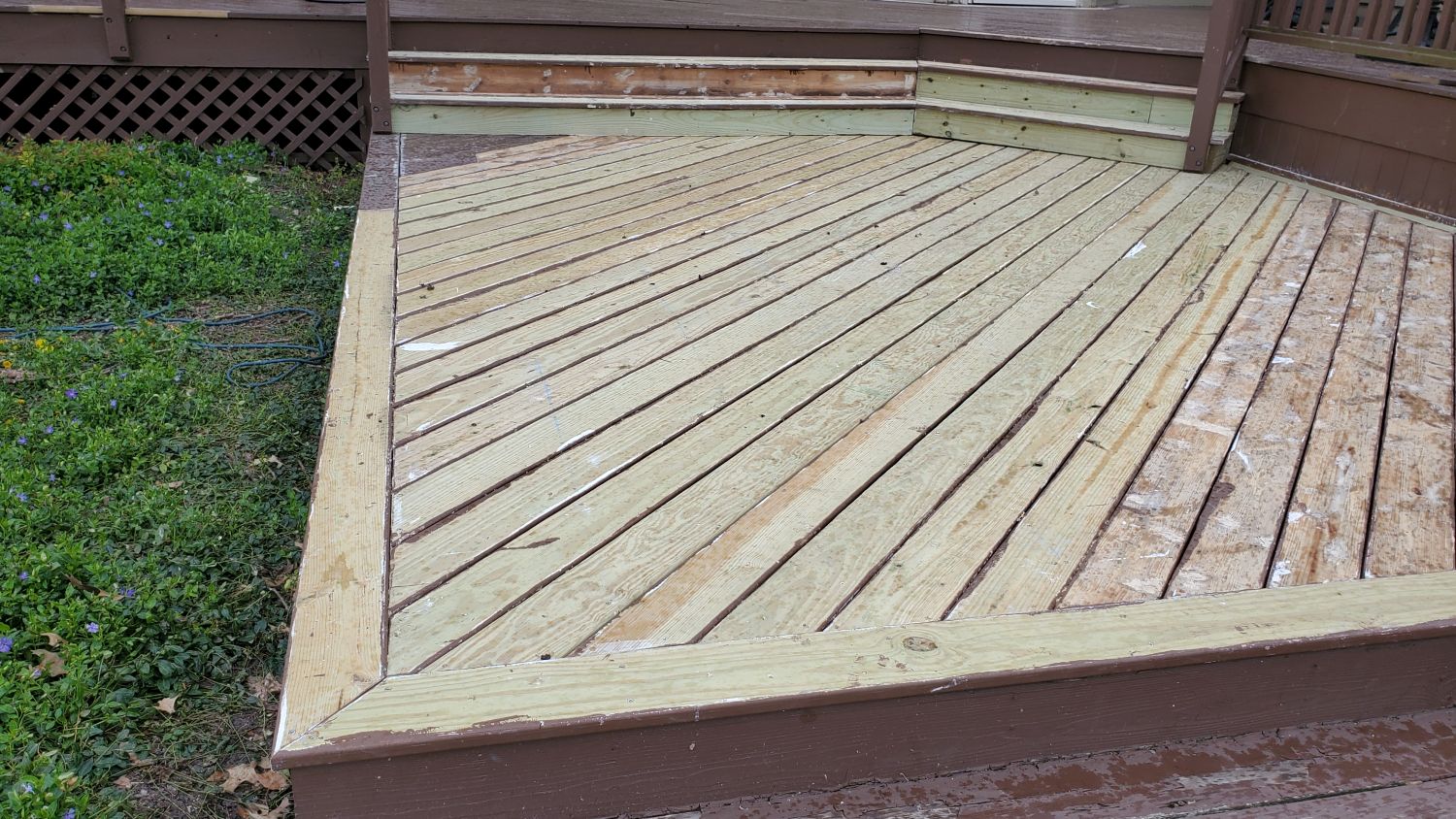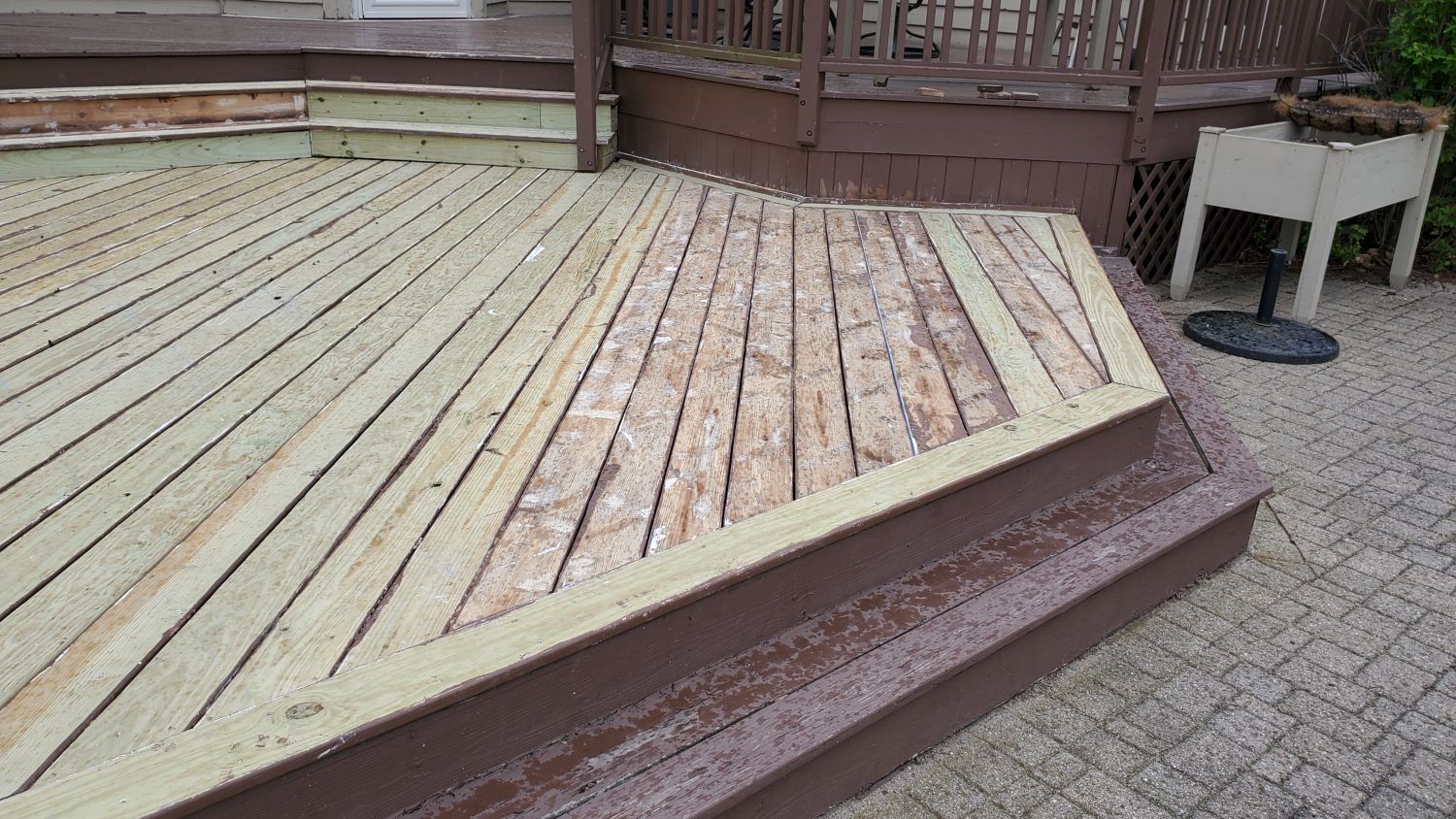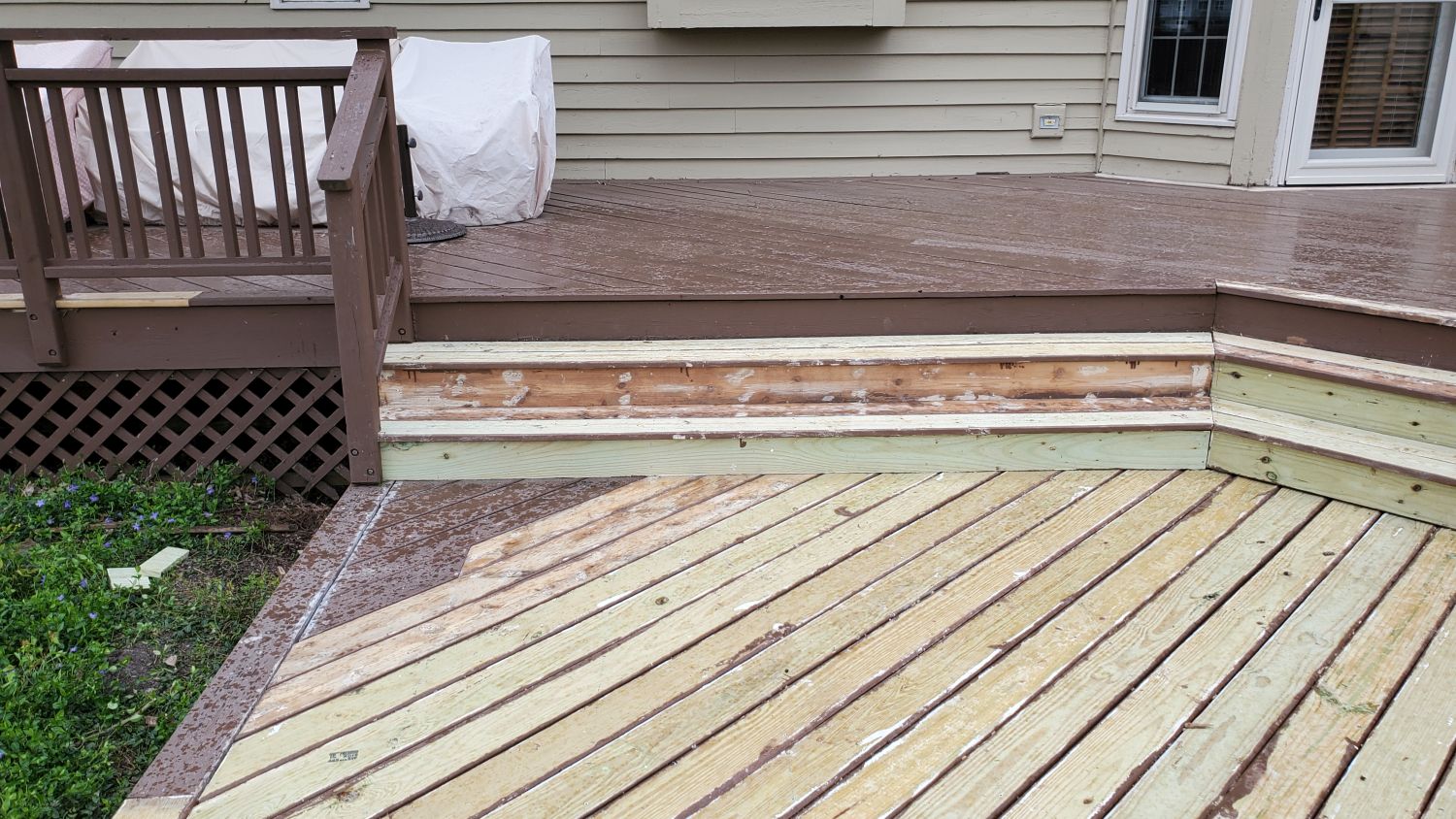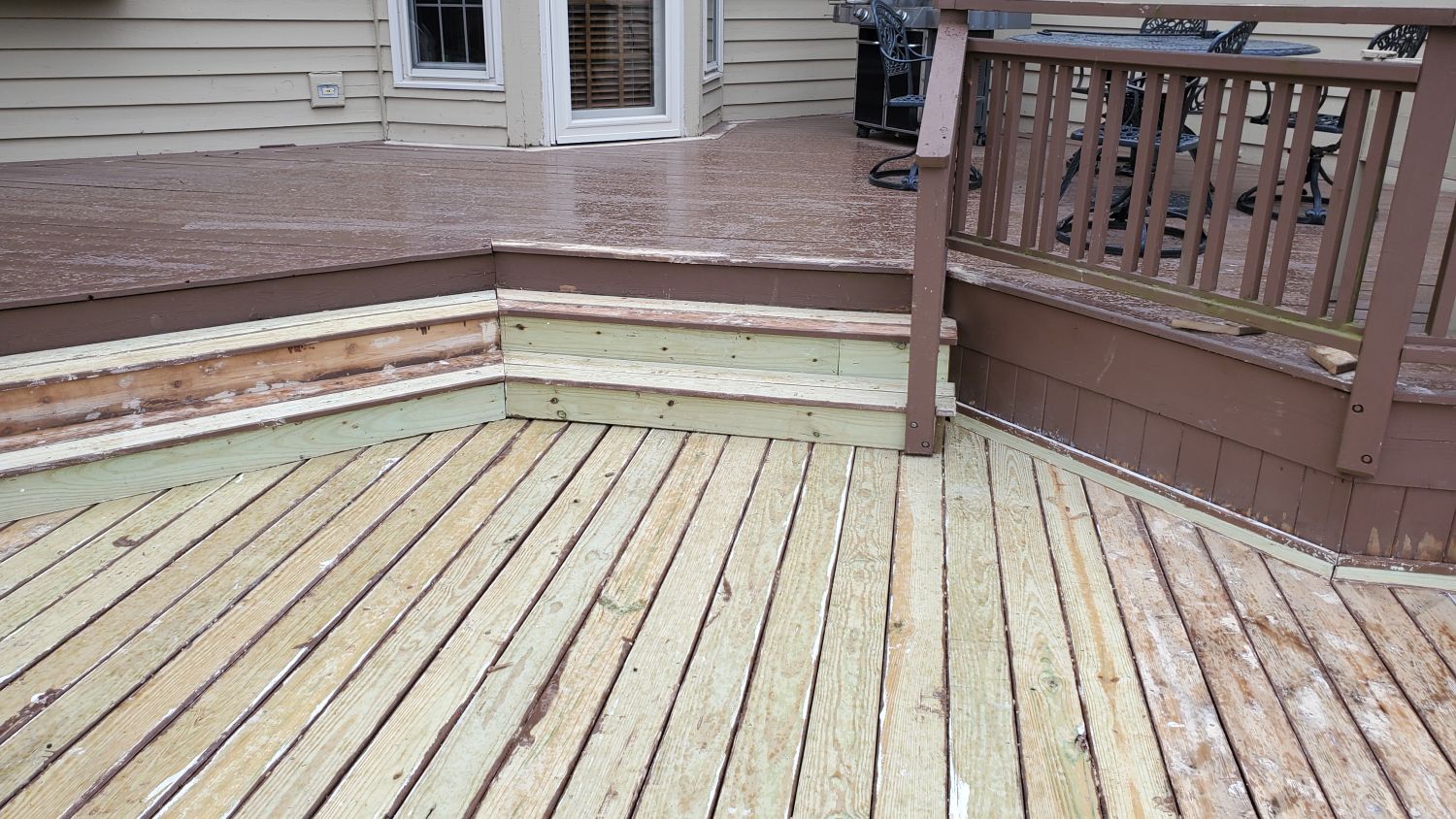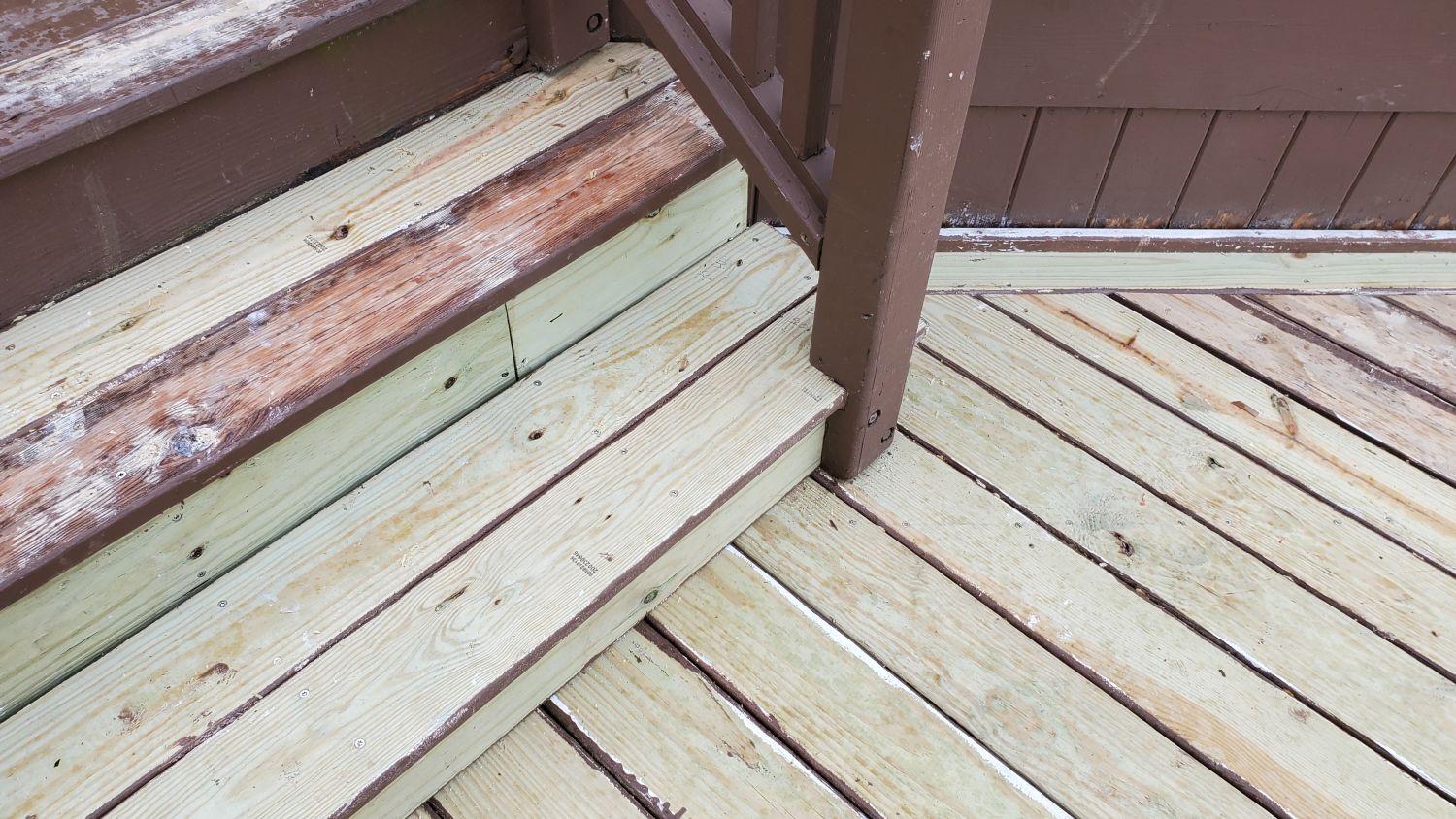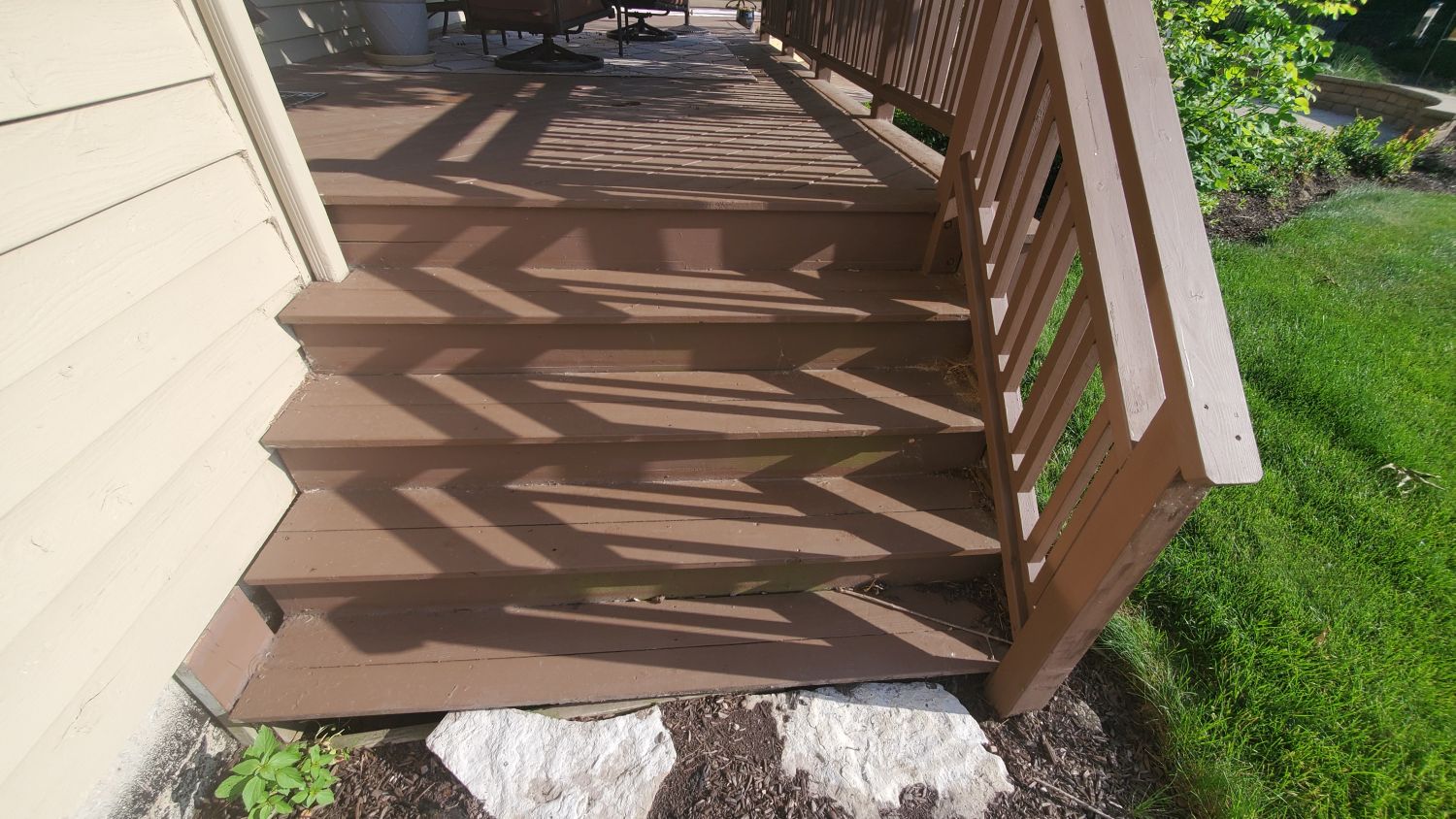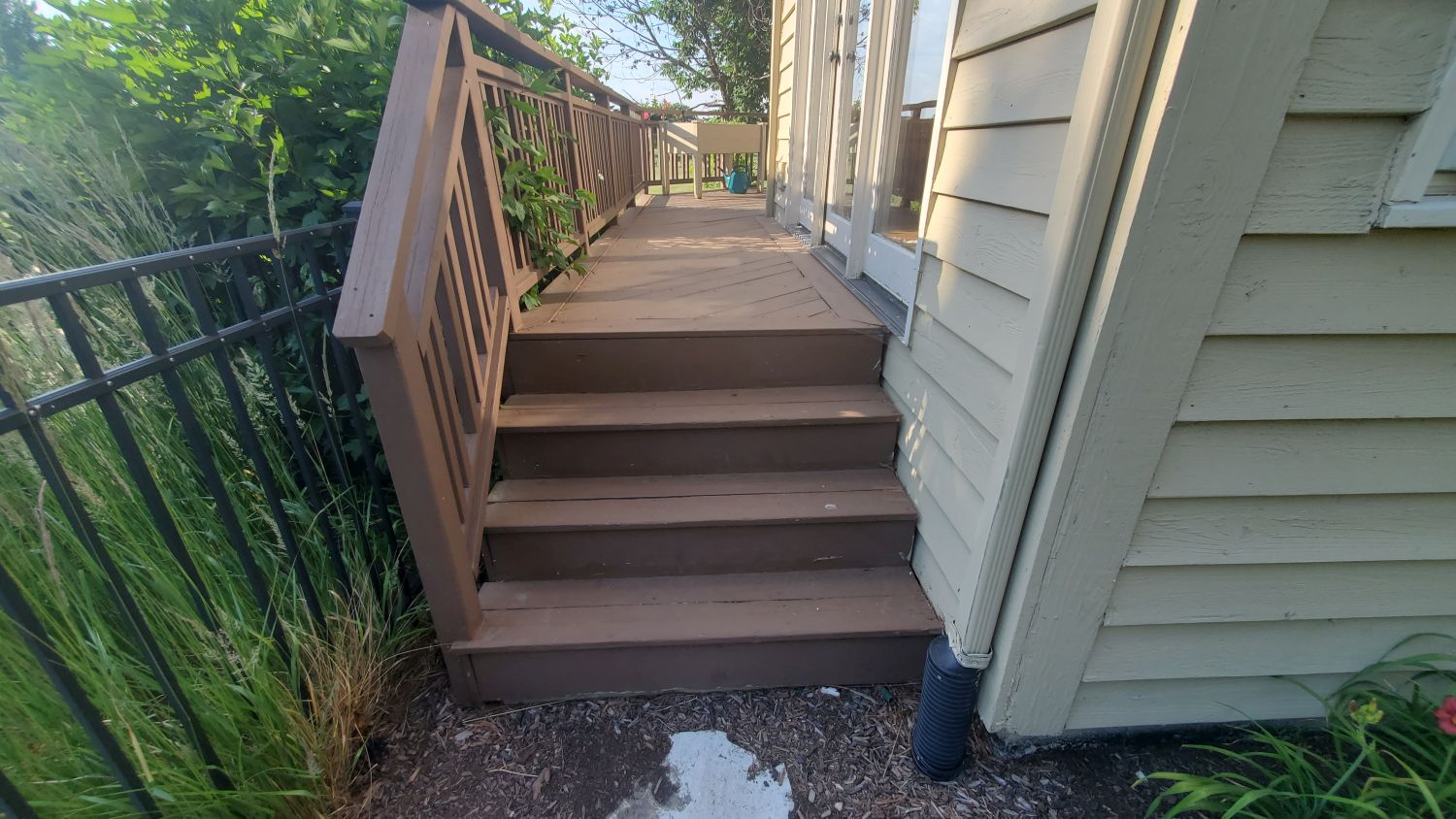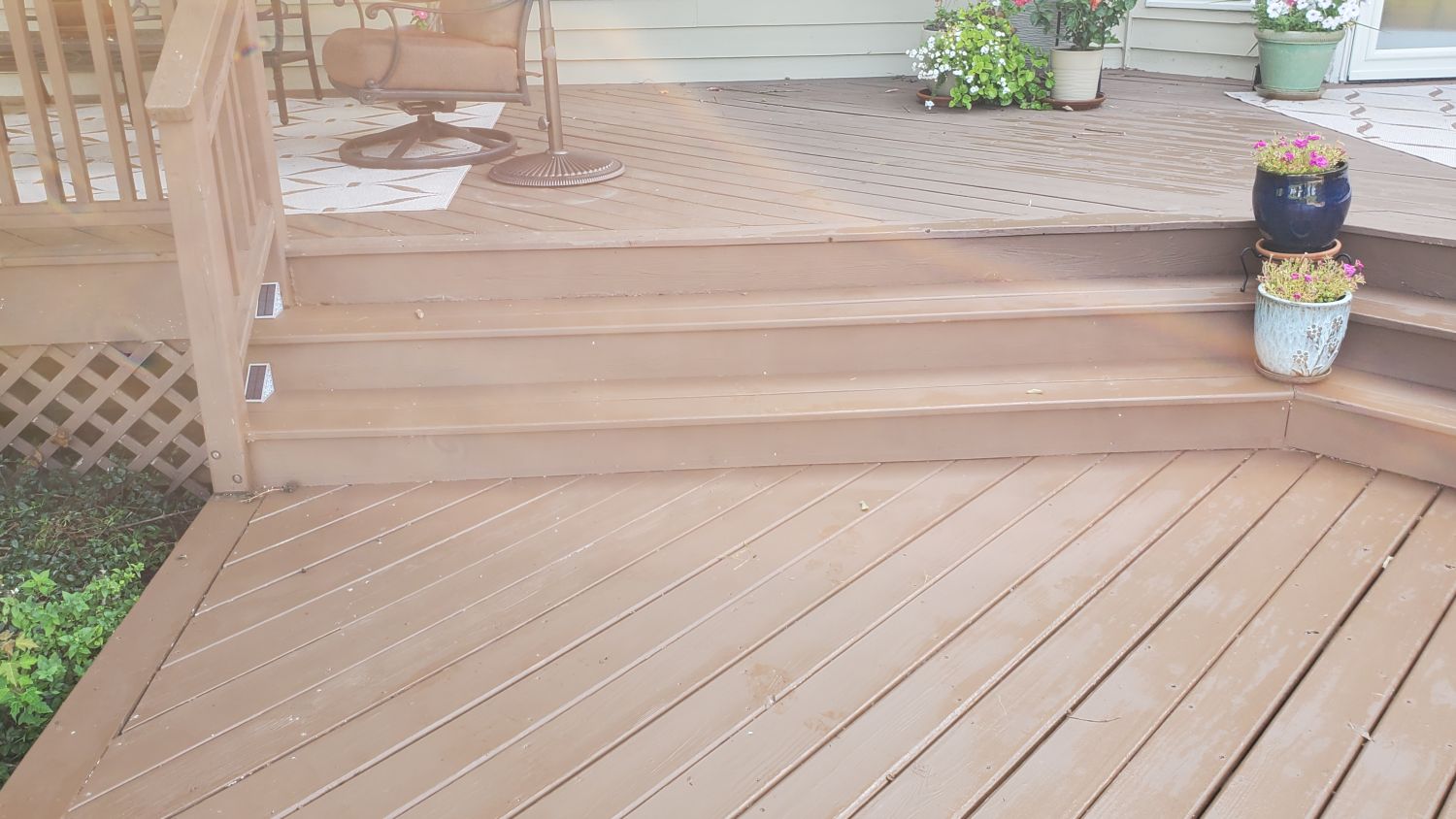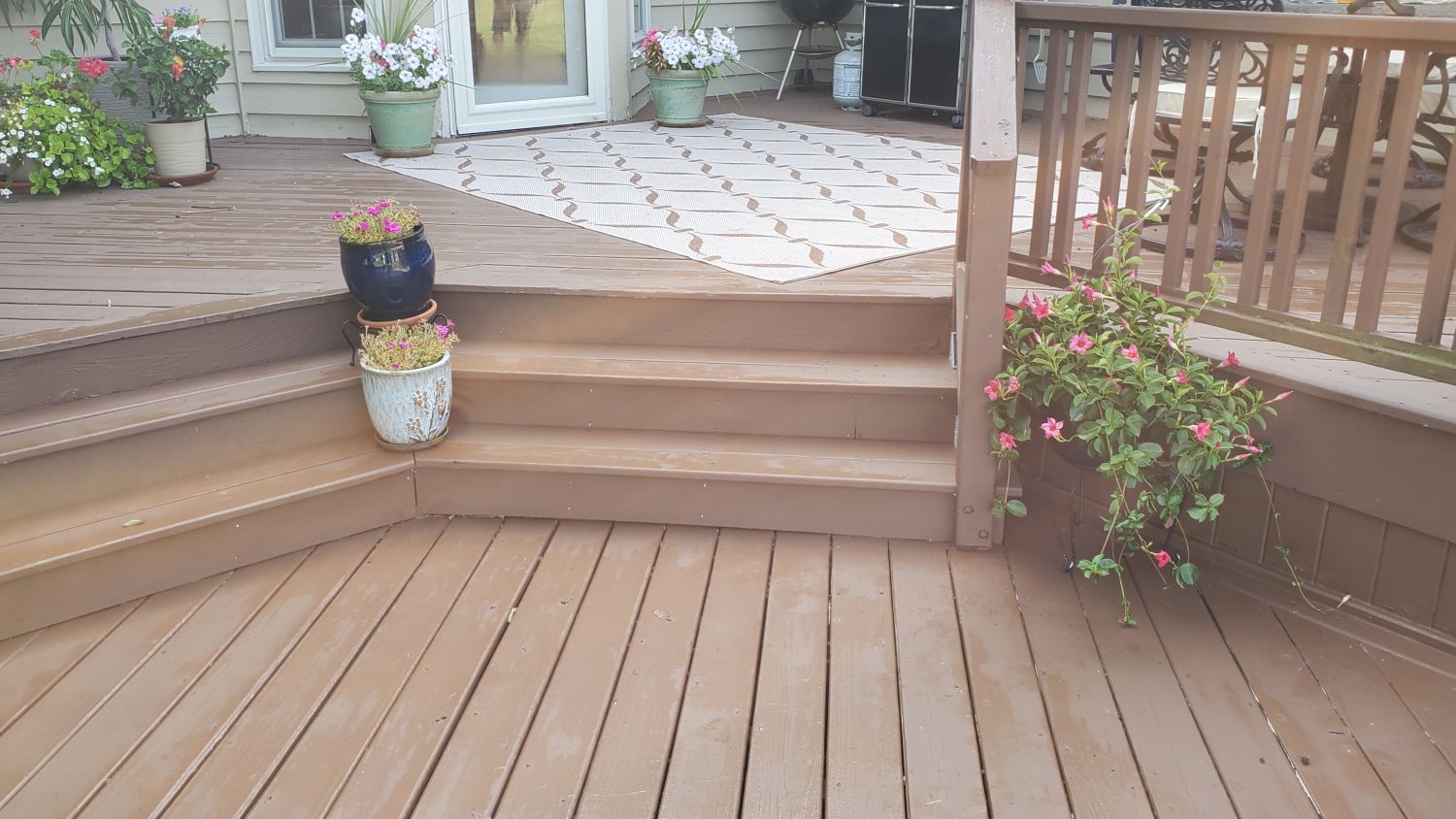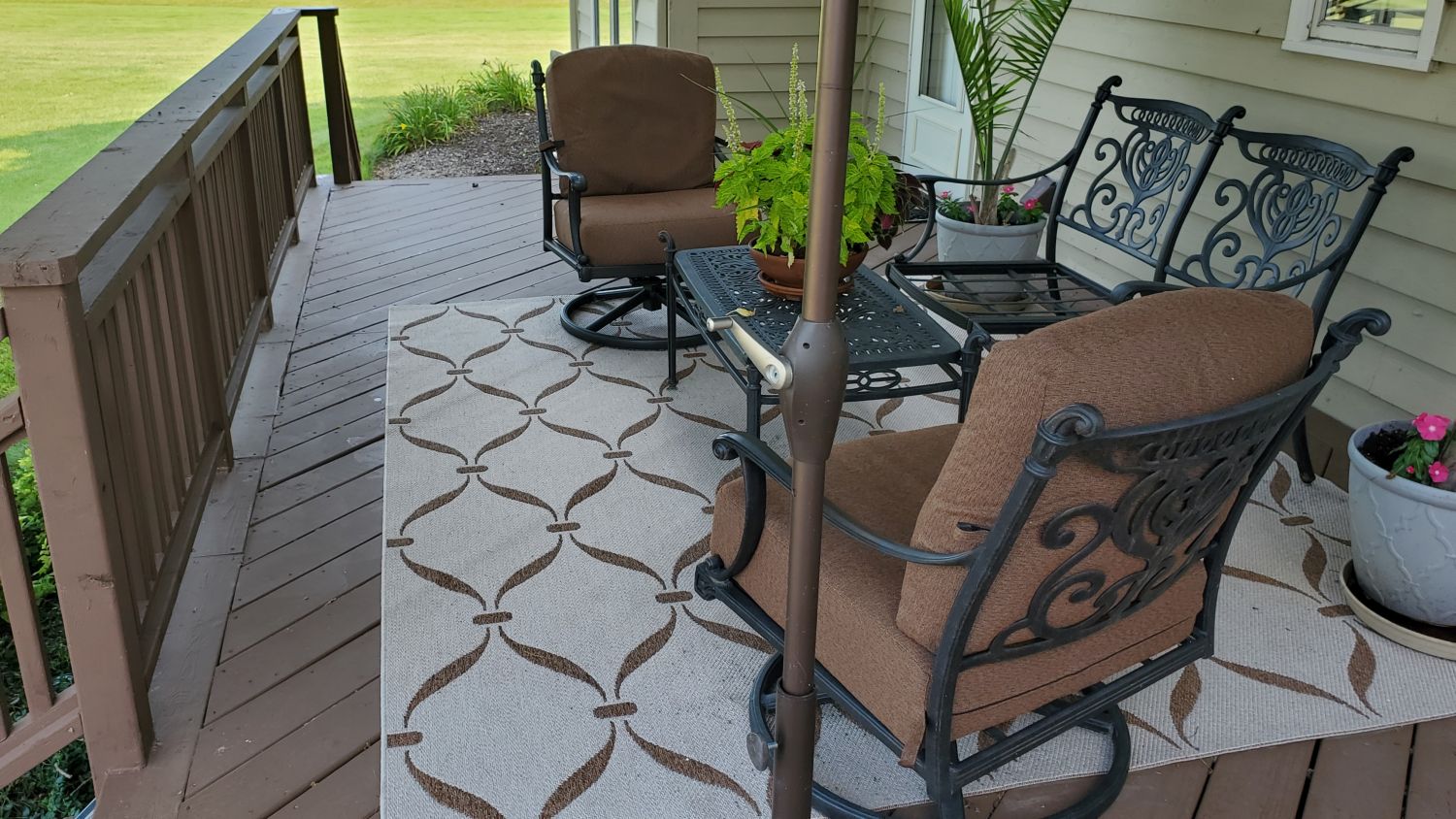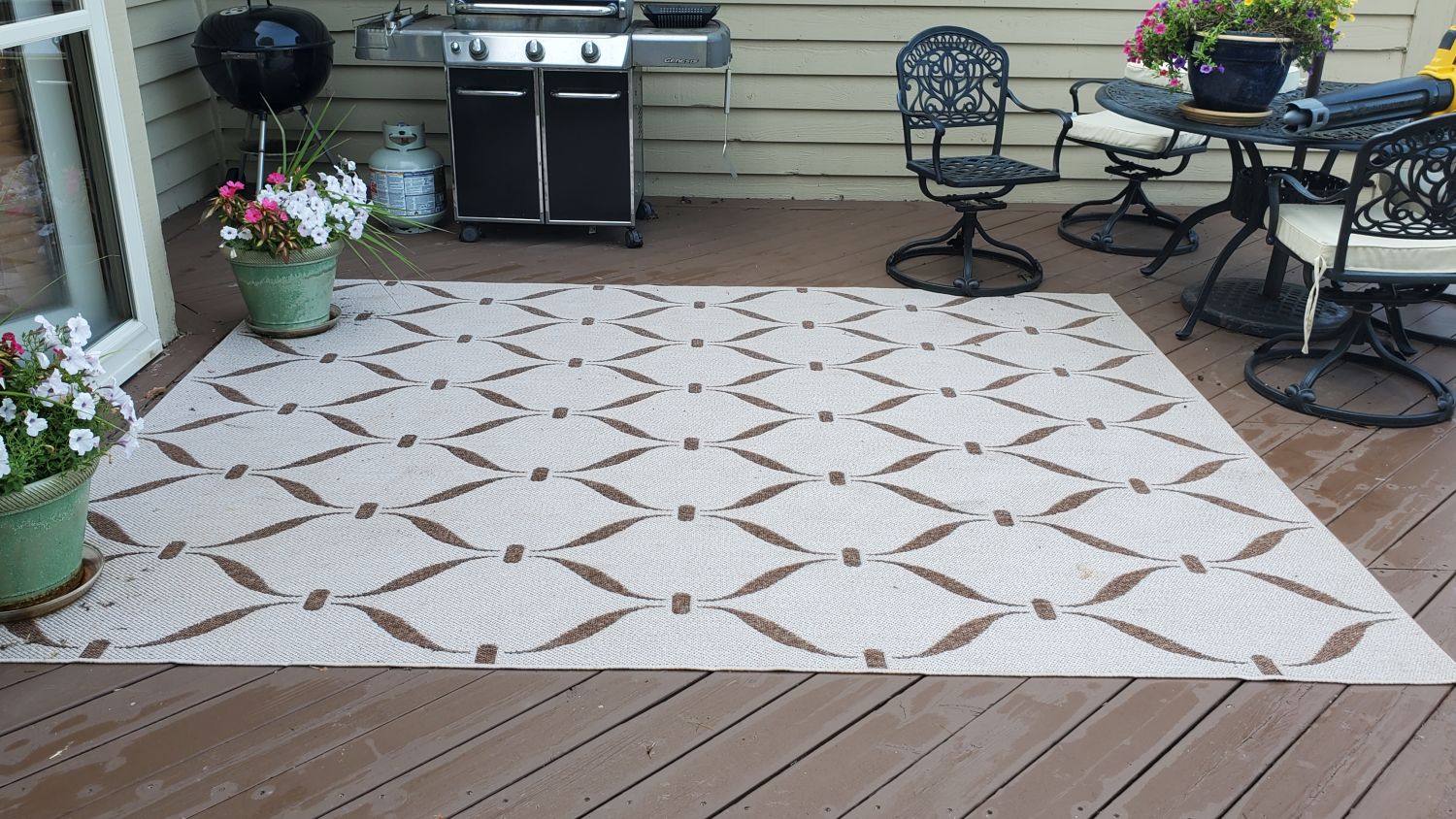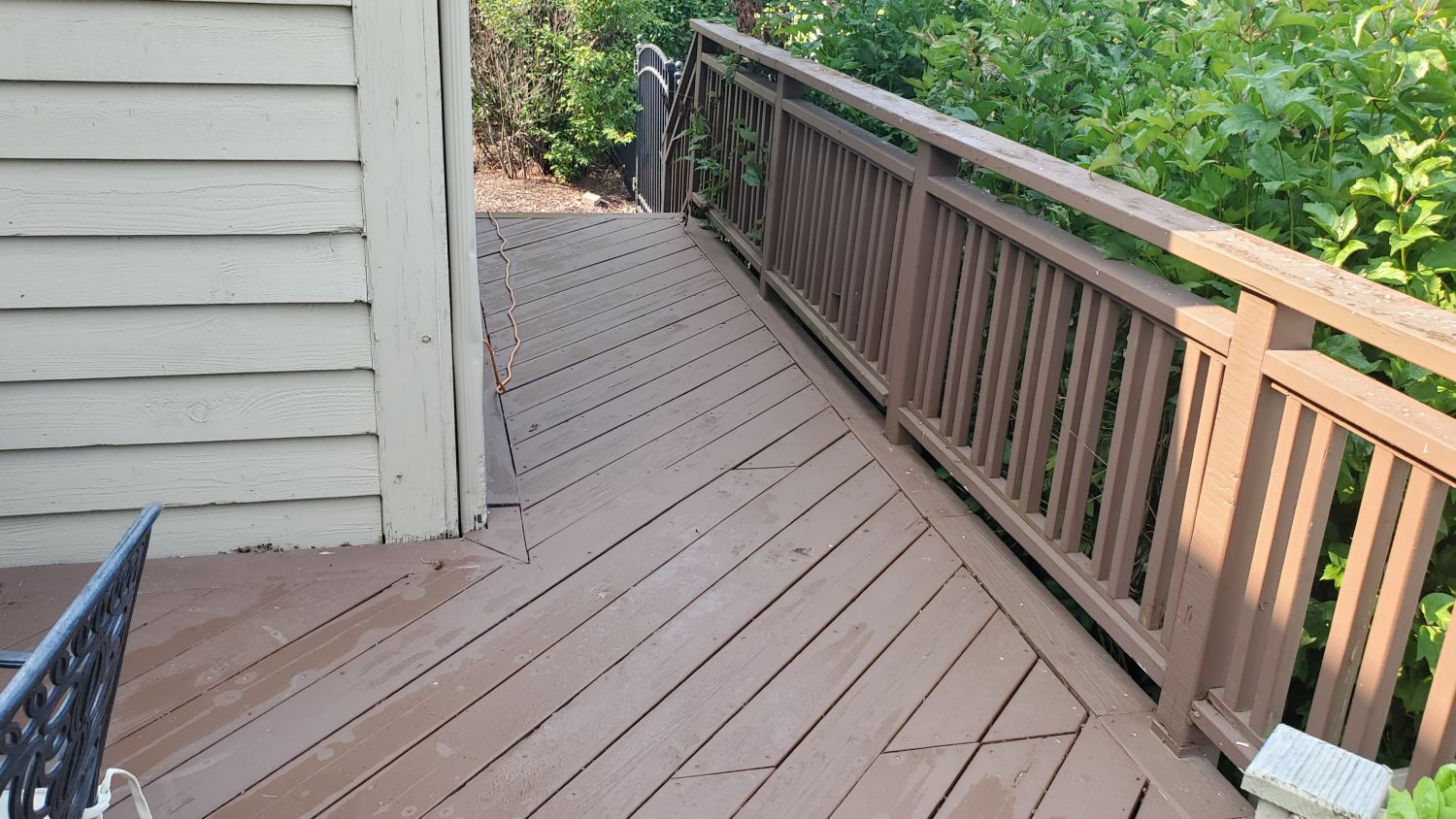2024 Lower Deck Redo
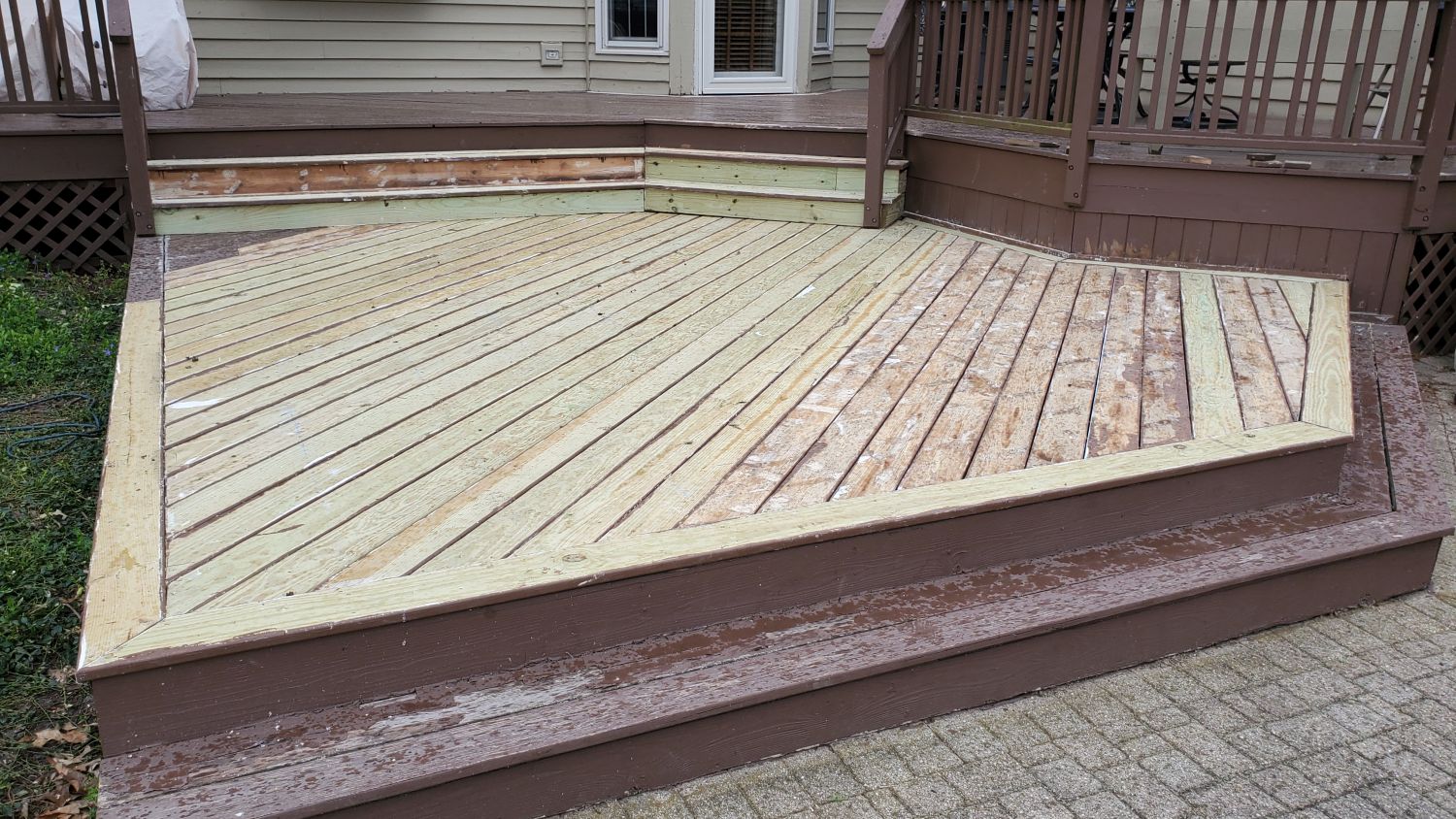
2024
2024 Lower Deck Redo
This was a BIG Project. We have an 865 SQFT Two Tier Deck (Upper Deck 575 sqft, Lower Deck 210 sqft, Steps 80 sqft). I built it out of Cedar 20 years ago and designed it with a border and angled decking which looks really nice (and is stronger). Unfortunately, the end grain of the angled decking boards is not open to the air and doesn't dry out properly which causes rotting. Additionally the boards have weathered quite a bit and many of them have rough cracked surfaces. It doesn't look good and allows moisture in the boards even with re-staining every year.
This year I decided to redo the lower deck and complete the project.
New Equipment and Tools
The only new equipment was a Dewalt 20V Impact Driver.
Materials and Supplies
Material costs were a little higher than last year as I discarded a lot more of the original
decking and bought more new boards:
Re-use the deck boards after reconditioning them (cedar);
Re-use spare wood from when I re-did the deck after removing the hot tub (cedar and treated);
New treated deck boards (6', 10' 12' 16' and 20' - Home Depot - delivered) (Various lenghts to allow only one board per spand for looks);
Wood Hardener (Minwax - Home Depot)(3 bottles);
Wood Filler (Dap Plastic Wood All Purpose Wood Filler - Menards)(1 tub);
Benjamin Moore Fresh Start Alkyd Deck and Siding Primer (1 gal - JC Licht);
Benjamin Moore Arbor Coat Deck and Siding Solid Stain (1 gals - JC Licht);
Grip Fast Stainless Steel Star Head Deck Screws (3 50bs boxes - Home Depot);
Caulk, Brushes, Smooth paint rollers, 120 Grit Sandpaper (Menards).
Cost
Dewalt Impact Driver (~$100), materials and supplies ~$1000. No labor cost! Super cheap considering if I just hired someone to take out all the old boards and install new, my guess would be $20,000-$30,000!!
The Fabrication Process
This is the tedious and time consuming process:
Scrape out every screw head that is filled with dirt and stain so I can get the bit to bite;
Remove the upper to lower deck steps, railing and stringers and label (half the stringers have to be replaced).
Remove and label the deck boards; Some of the screws were frozen so some deck boards needed to be pried out and then the screws
cut off with a grinder.
This year I chose to reuse much less of the original boards (they were in pretty bad shape and planing is very noisy and time
consuming.
Once all the boards were out I decided which ones to discard (most) and which ones to re-use and in what new or original location. Lots
of spreadsheet work. Only a couple I was able to re-use in same location, others I had to trim and / or flip to be used in a
shorter location.
Order all the new boards from Home Depot for delivery.
Re-used boards I planed removing any cupping, surface problems and the stain getting down to the bare wood (generally three
passes removing 1/32" each pass);
Fill old screw holes (unless board did not need trimming and can be re-installed in the same spot) and surface cracks;
Harden the end grain;
Sand 50Grit with belt sander then vac;
1st Coat primer ends and sides of each board. Note since most of the boards were new I did not do the top surface
allowing them to dry out prior to finishing in a couple of months in situ;
1st coat stain (ends and edges only);
2nd coat stain (ends and edges only).
Fabricated new stringers for 2x12' new pressure treated boards.
Done with Fab!
Install
Because much of the deck had one end of the boards going under the steps I let the boards run wild under the deck and run a little wild on the outer perimeter (much less precise cutting needed vs. what I did on the upper deck). Then, once installed I snapped a chalk line at the perimeter and cut all to perfect length easily in situ.
A few of the final boards had to be measured exact and installed.
Installed the perimeter boards.
Installed the stringers (new and old).
Installed the steps, railing and some trim to cover up the rotted lower part of the wainscoting.
Done with install!
North, South and Lower Deck to patio steps and Top surface of railing
Sanded, filled, 1 coat primer, 2 coats stain on these boards in situ.
Done!
Final Finish
Let the pressure treated boards dry out for a couple of months.
Tested the boards with a moisture meter 0.0% 6/21/24.
One coat primer.
Two coats stain.
Done!
The Result
Very happy with the results. The deck looks 1000% better and all the rot removed. Hardening the end grain, doing the sides and doing both primer and stain with all the sanding produced a smooth and lasting deck. No more water building up under the stain after each rain. No more peeling. End Grain hardened. Sides primed and stained. Should last 30 years!!
Pictures
